Tamil Nadu, a state located in the southern part of India, is a bird paradise. It is home to a wide range of bird species, many of which are endemic to the region.
From majestic raptors like the White-bellied Sea Eagle to tiny songbirds like the Indian White-eye, Tamil Nadu’s avian diversity is a wonder to behold.
The state’s diverse habitats, ranging from tropical forests and wetlands to urban areas and agricultural fields, provide a rich and varied feeding and nesting environment for the birds.
In this article, we will explore some of the most fascinating bird species that can be found in Tamil Nadu.
1. Phasianidae
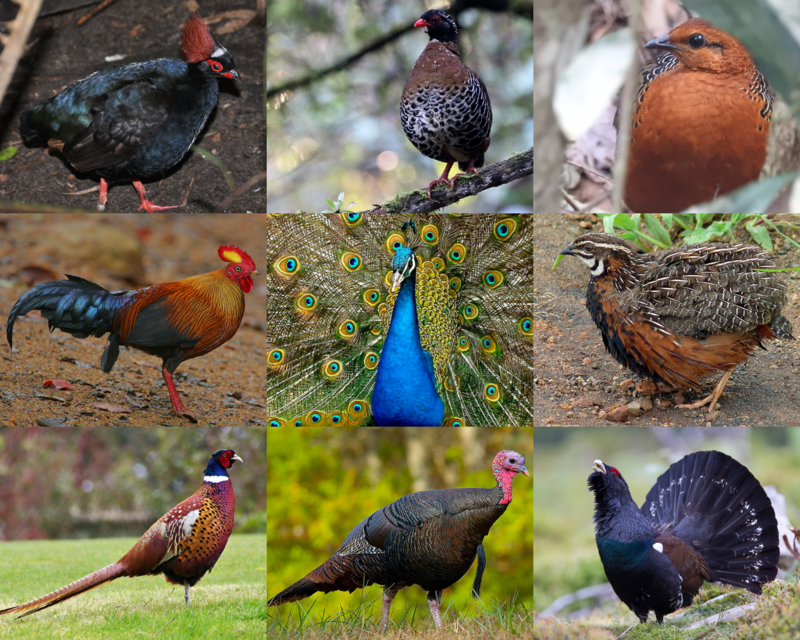
The Phasianidae family of birds is one that contains many popular gamebirds, with a total of 185 species divided across 54 genera.
These heavy ground-living birds include pheasants, partridges, junglefowl, chickens, and turkeys among others like Old World quail and peafowl.
This large family was formerly split into two subfamilies known as the Phasianinae and Perdicinae but this classification has since been changed to reflect more current scientific findings on them.
All these different types of birds have certain things in common such as their strong legs for scratching through leaves or soil looking for food items including insects, seeds, and other vegetation which makes up most of their diet.
They also all tend to be quite colorful in order to attract mates during breeding season when males will often display vibrant feathers or do dances around females in an attempt at courtship ritual displays.
The majority are monogamous creatures too although some may form short-term pair bonds before going off alone again once mating has taken place – either way.
There tends to be very little parental care given by adults after eggs have hatched so chicks need to fend for themselves right away.
Scientific classification:
| Kingdom | Animalia |
| Phylum | Chordata |
| Class | Aves |
| Order | Galliformes |
| Superfamily | Phasianoidea |
| Family | Phasianidae Horsfield, 1821 |
Also Featured In: Most Common Birds in China, Turkey Birds You Should Know
2. Sandgrouse
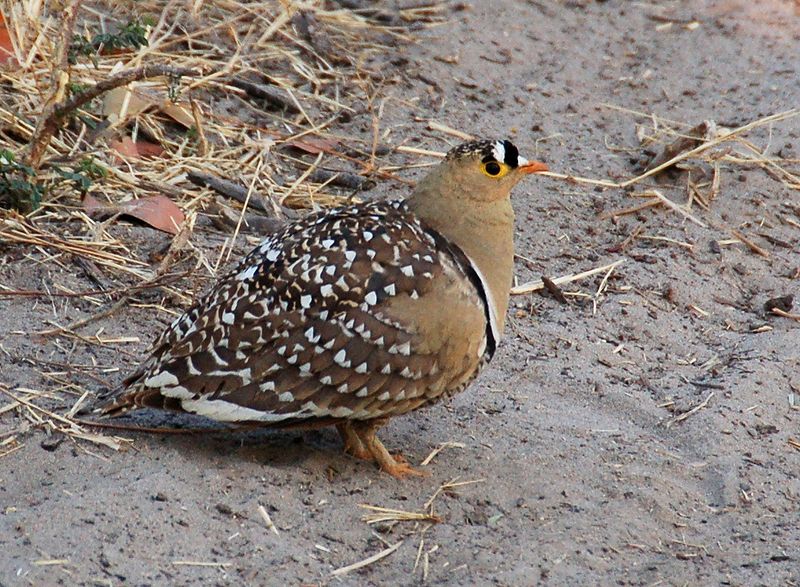
Sandgrouse is birds of the order Pterocliformes, found mainly in Africa and Asia. There are sixteen species belonging to two genera – Syrrhaptes from central Asia and Pterocles from Africa and other Asian countries.
They inhabit treeless areas such as deserts, steppes, scrubland, or savannas and tend to be ground-dwelling birds that feed on seeds.
Sandgrouse has adapted special features for survival in their harsh environment.
They possess well-developed feet with four toes used for walking over hot sand while keeping their body temperature cool at all times by regulating heat loss through their legs.
Their feathers also act like a sponge helping them absorb water before flying long distances back home where they then expel it using specialized glandular secretions located near the wings so that chicks can drink directly from an adult’s breast plumage.
Scientific classification:
| Kingdom | Animalia |
| Phylum | Chordata |
| Class | Aves |
| Clade | Columbimorphae |
| Order | Pterocliformes Huxley, 1868 |
| Family | Pteroclidae Bonaparte, 1831 |
Also Featured In: Italian Birds You Should Know, Birds That Live in Iraq
3. Painted-Snipe
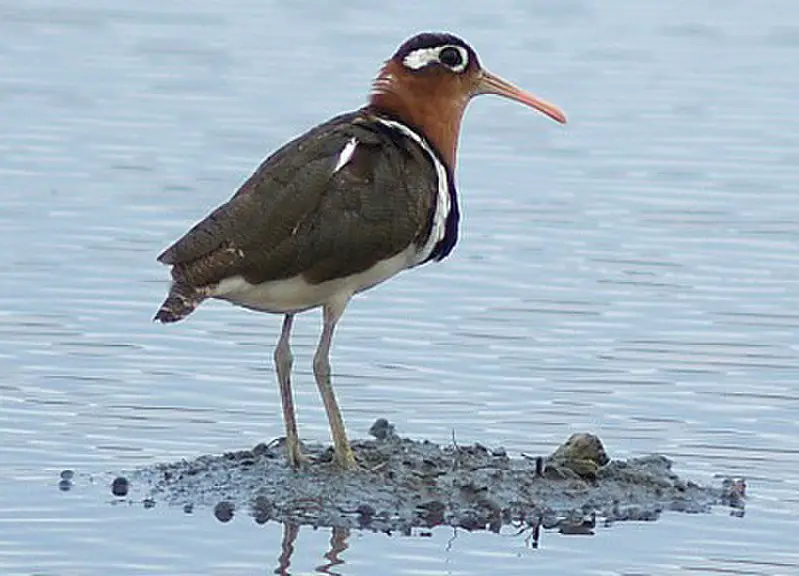
Painted snipes are beautiful and unique wading birds found in the Rostratulidae family. They have short legs, long bills, and a striking plumage which distinguishes them from true snipes.
Males tend to be smaller than females with duller overall coloration. There are three species of painted snipe.
The Greater Painted Snipe, Lesser Painted Snipe, and Australian Painted Snipe – all three have different habitats ranging from wetland pools to grasslands or mangroves depending on their region.
These birds feed mainly on earthworms but also consume insects, crustaceans and plant material when available.
As they rely heavily on wetlands for breeding purposes it is important that we protect these precious habitats so that this special bird can continue to thrive.
Scientific classification:
| Kingdom | Animalia |
| Phylum | Chordata |
| Class | Aves |
| Order | Charadriiformes |
| Suborder | Thinocori |
| Family | Rostratulidae Coues, 1888 |
Also Featured In: Queensland Birds You Should Know, New South Wales Birds You Need to See
4. Plovers

Plovers are a family of around 64-68 species of ground-dwelling birds, commonly found in open country such as fields, meadows and tundras.
They have short bills with webbed feet to help them forage through mud or shallow water.
Plover plumage is usually mottled brown though some species may have brighter colors on the head and wings.
These birds feed mainly on insects but can also eat small crustaceans and worms.
Plovers breed during springtime when they dig holes in sandy or pebbled beaches to lay their eggs which hatch after about 3 weeks incubation period.
They use distraction display behaviour by pretending an injury to the predators away from their nests if needed for protecting their young ones.
Scientific classification:
| Kingdom | Animalia |
| Phylum | Chordata |
| Class | Aves |
| Order | Charadriiformes |
| Family | Charadriidae Leach, 1820 |
Also Featured In: Common Uzbekistan Birds, Syrian Birds You Need to Know
5. Stilts And Avocets
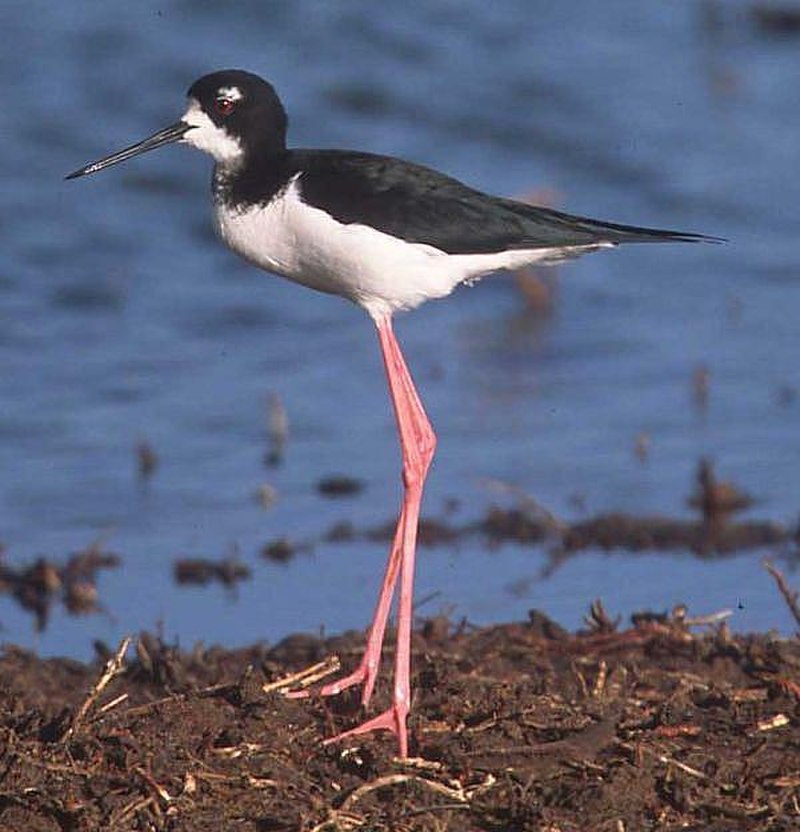
Stilts and avocets are two distinct groups of birds belonging to the family Recurvirostridae. They range in length from 30-46 cm (12-18 inches) and weigh between 140 – 435 g (4.9 – 15.3 ounces).
Males usually have slightly larger bodies than females, with long thin legs, necks and bills.
Avocet bills curve upwards uniquely while stilt beaks remain straight most times.
These wading birds live mainly near shorelines or wetlands where they feed on aquatic invertebrates like brine shrimp, insects etc., occasionally supplementing their diet with seeds or small fish too.
Stilts also inhabit open fields in search of food sources such as earthworms or grasshoppers during the non-breeding season.
Both groups migrate over large distances for warmer weathers when it gets cold outside.
Scientific classification:
| Kingdom | Animalia |
| Phylum | Chordata |
| Class | Aves |
| Order | Charadriiformes |
| Suborder | Charadrii |
| Family | Recurvirostridae Bonaparte, 1854 |
Also Featured In: Native Birds of Kazakhstan, Birds of Sweden
6. Glareolidae
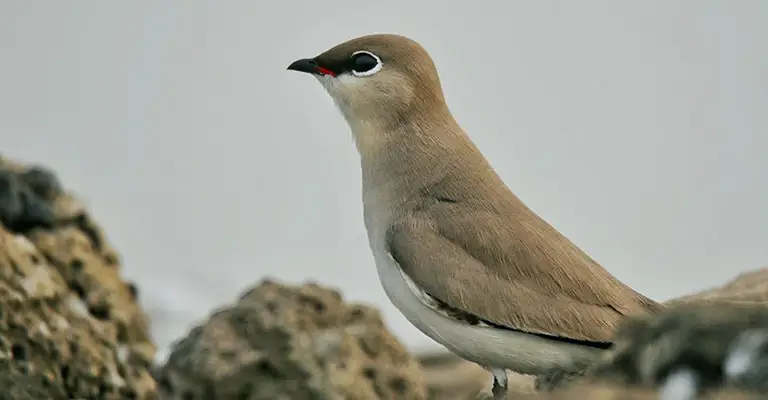
Glareolidae is a family of wading birds, consisting of four genera and 17 species. They are distinguished from other charadrii by their long bills which have a slight downward curve.
Glareolidae live around open grasslands and deserts, where they hunt for insects using the bill to probe into soil or vegetation.
Most species are found in Africa but two pratincoles inhabit parts of Europe and Asia as well.
Coursers tend to be larger than pratincoles with longer legs allowing them to run quickly across sandy dunes while feeding on small animals like lizards or spiders.
Pratincoles feed mainly on flying insects, snatching them out of midair with great agility during flight.
All glareolids share unique features such as large eyes that help it spot prey at night easily making this group one interesting bird family.
Scientific classification:
| Kingdom | Animalia |
| Phylum | Chordata |
| Class | Aves |
| Order | Charadriiformes |
| Suborder | Lari |
| Family | Glareolidae CL Brehm, 1831 |
Also Featured In: Belarus Birds You Should Know, Lebanon Birds Live in Semi-Desert Areas
7. Bustard
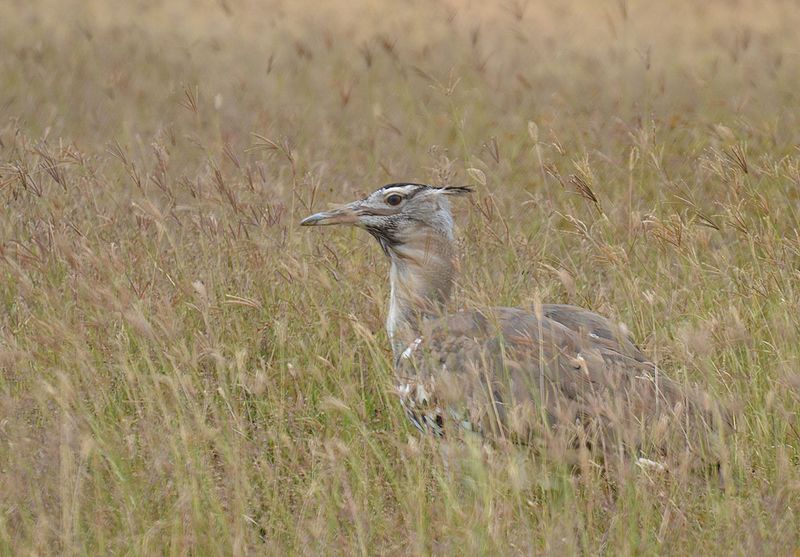
Bustards are large, terrestrial birds that inhabit dry grassland areas and the steppes of the Old World. They range from 40-150 cm in length and belong to the family Otididae.
Bustards have an omnivorous diet consisting of leaves, buds, seeds, fruit as well as small vertebrates and invertebrates.
These birds usually live a solitary life but can be seen gathering around water sources or food during certain times of year such as mating season.
Due to their large size they are vulnerable to predation by foxes or other animals which is why they tend to remain alert at all times.
When in open spaces while relying on camouflage for protection against predators when out in tall vegetation coverings.
Scientific classification:
| Kingdom | Animalia |
| Phylum | Chordata |
| Class | Aves |
| Clade | Otidimorphae |
| Order | Otidiformes Wagler, 1830 |
| Family | Otididae Rafinesque, 1815 |
Also Featured In: Common Birds in India, Ukrainian Birds You Should Know
8. Indian Roller
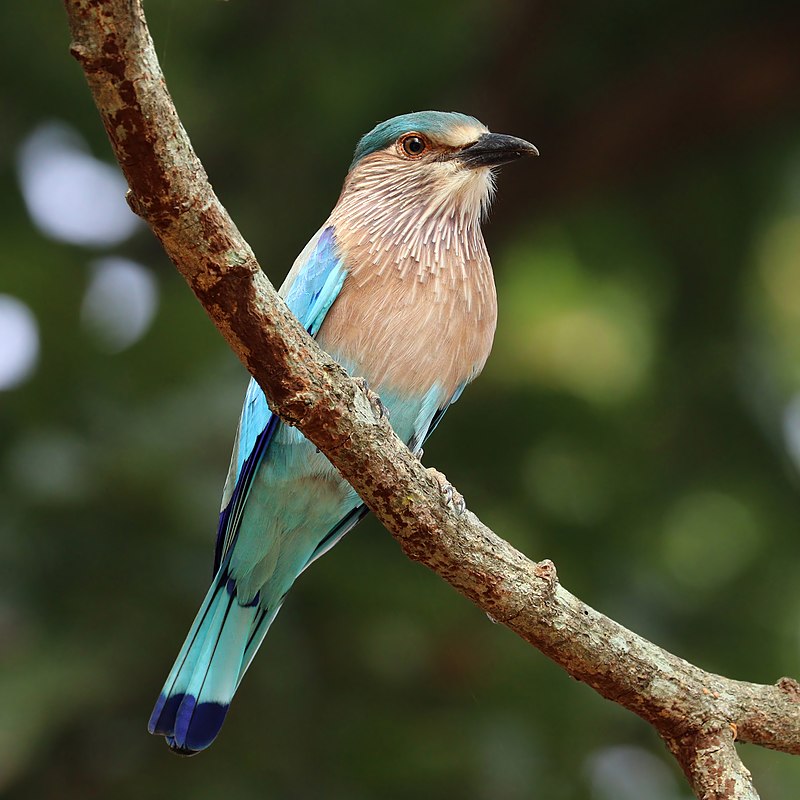
The Indian roller is a beautiful bird of the Coraciidae family. It has an average length of 12-13 inches and weighs 5.9 to 6.2 ounces with a wingspan of 26-29 inches.
Its face and throat are pinkish, while its head and back are brown with blue on its rump, light blue markings on one side of the wing, dark blue markings on other side making it easily distinguishable in flight.
Both male and female have same colouration but males tend to be slightly larger than females though they can only be differentiated when seen together closely due to similar colouring pattern between sexes.
The Indian Roller makes spectacular aerial dives from great heights during courtship display which attracts many viewers each year.
Scientific classification:
| Kingdom | Animalia |
| Phylum | Chordata |
| Class | Aves |
| Order | Coraciiformes |
| Family | Coraciidae |
| Genus | Coracias |
| Species | C. benghalensis |
Also Featured In: Birds That Live in the Jungle, Birds of Karnataka
9. Painted Stork
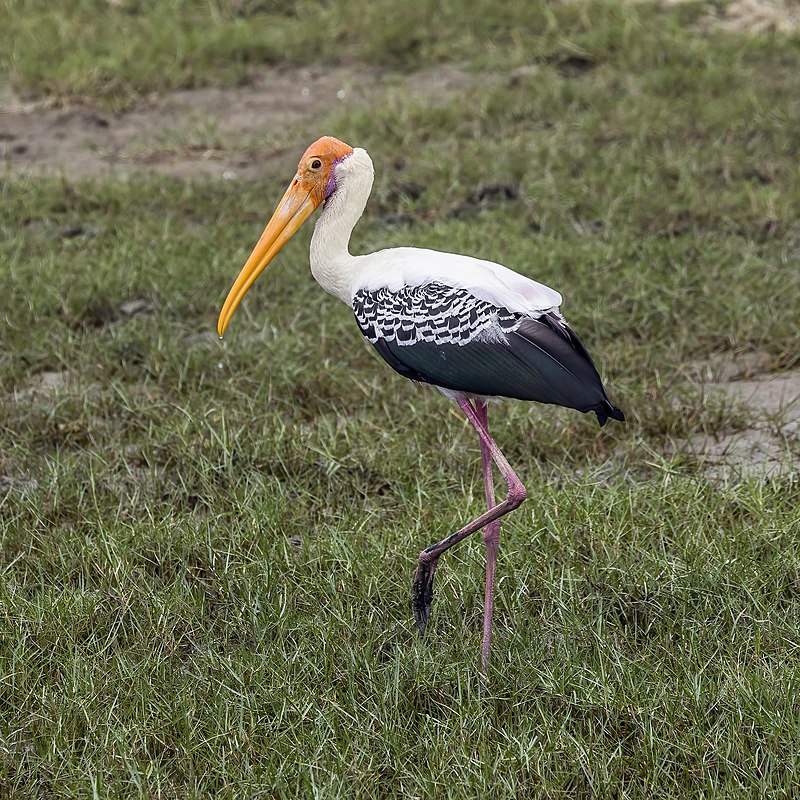
The Painted Stork is a large bird that belongs to the stork family. It has an impressive wingspan and can be found in tropical Asia, ranging from the Indian subcontinent all the way to Southeast Asia.
These birds are unique because of their pink tertial feathers, which gives them their name. They form flocks when they forage in shallow waters near rivers or lakes.
They dip their half-open beaks into water looking for food such as fish, frogs and other small aquatic creatures.
A distinctive feature of these birds is that during breeding season both males and females have red eyes with yellow rings around them.
This species also displays amazing cooperative behaviour when nesting; young storks help build nests by bringing material back to older ones who weave it together forming huge colonies on trees close to wetlands.
Scientific classification:
| Kingdom | Animalia |
| Phylum | Chordata |
| Class | Aves |
| Order | Ciconiiformes |
| Family | Ciconiidae |
| Genus | Mycteria |
| Species | M. leucocephala |
Also Featured In: Gujarati Birds, Common Birds in Bangalore
10. Asian Koel
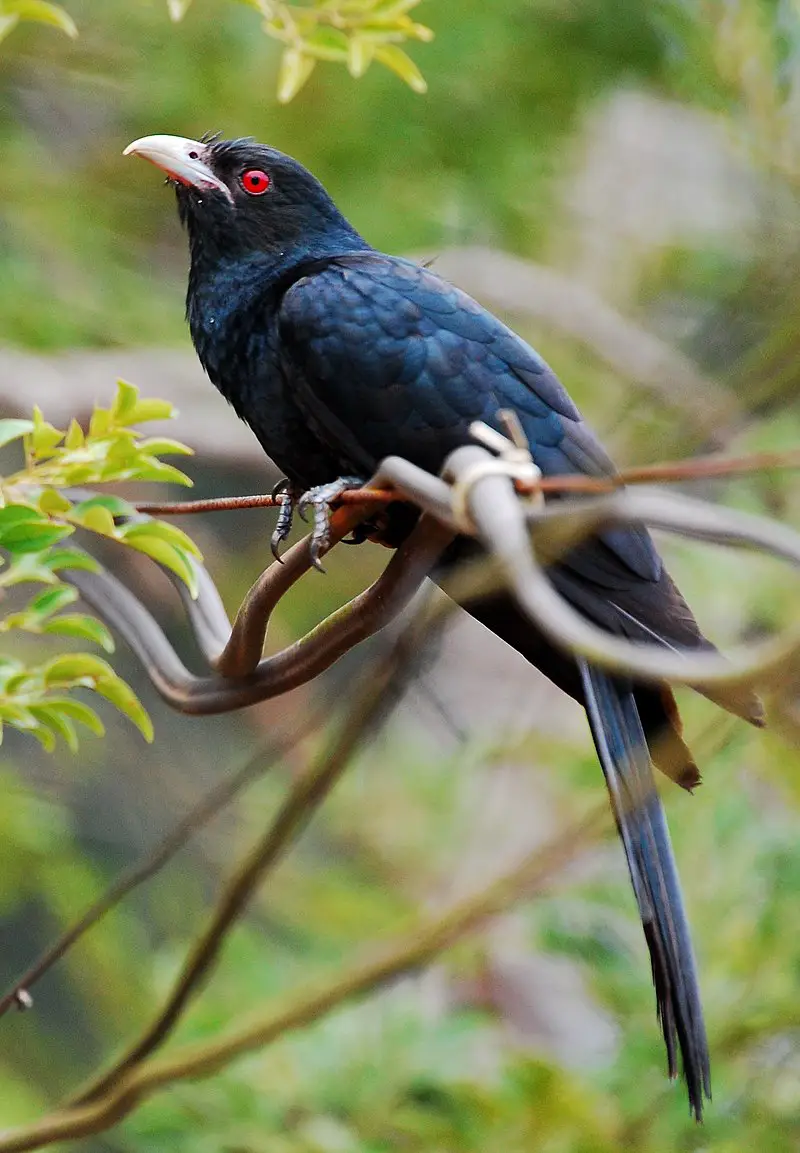
The Asian koel is a member of the Cuculiformes family, found in India, China and Southeast Asia. It shares its range with two closely related species – black-billed koels and Pacific koels.
This bird exhibits brood parasitism; it lays its eggs in nests of other birds, who then unknowingly become foster parents to their young.
Characterised by long tails and glossy feathers that vary from deep blue to greenish-black depending on region, these birds are known for their loud call which can be heard during both day or night time.
They feed mainly on fruits but also take insects when available.
All in all, the Asian Koel is an interesting species that has adapted itself well over many centuries within different ecosystems across Asia.
Scientific classification:
| Kingdom | Animalia |
| Phylum | Chordata |
| Class | Aves |
| Order | Cuculiformes |
| Family | Cuculidae |
| Genus | Eudynamys |
| Species | E. scolopaceus |
Also Featured In: Hong Kong Birds You Need to See, Birds of Goa
11. Lesser Coucal
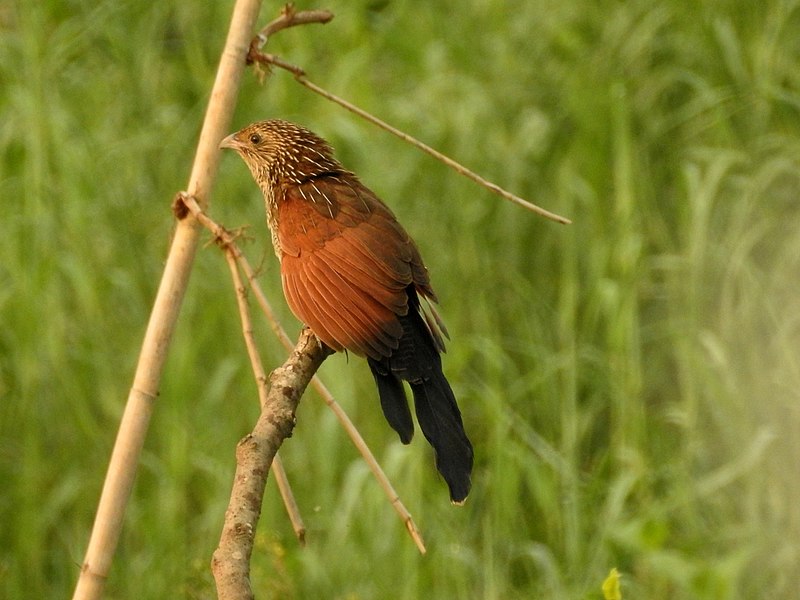
The Lesser Coucal is an iconic bird of the Cuculidae family. It has a wide distribution range and can be found in wetland habitats with plenty of grass, trees and shrubs.
This species stands out due to its relatively small size compared to other cuckoos as well as their less prominent bills and pale shaft streaks on the feathers of their heads and backs.
They have long claws which they use for perching or catching prey while hunting, making them efficient predators.
The calls made by these birds are quite distinct from those heard from other members of this genus – it sounds like two stones being knocked together.
All in all, this unique species is truly fascinating.
Scientific classification:
| Kingdom | Animalia |
| Phylum | Chordata |
| Class | Aves |
| Order | Cuculiformes |
| Family | Cuculidae |
| Genus | Centropus |
| Species | C. bengalensis |
Also Featured In: Birds that Live Near Halmahera, Common Birds of Lombok
12. Rufous Treepie
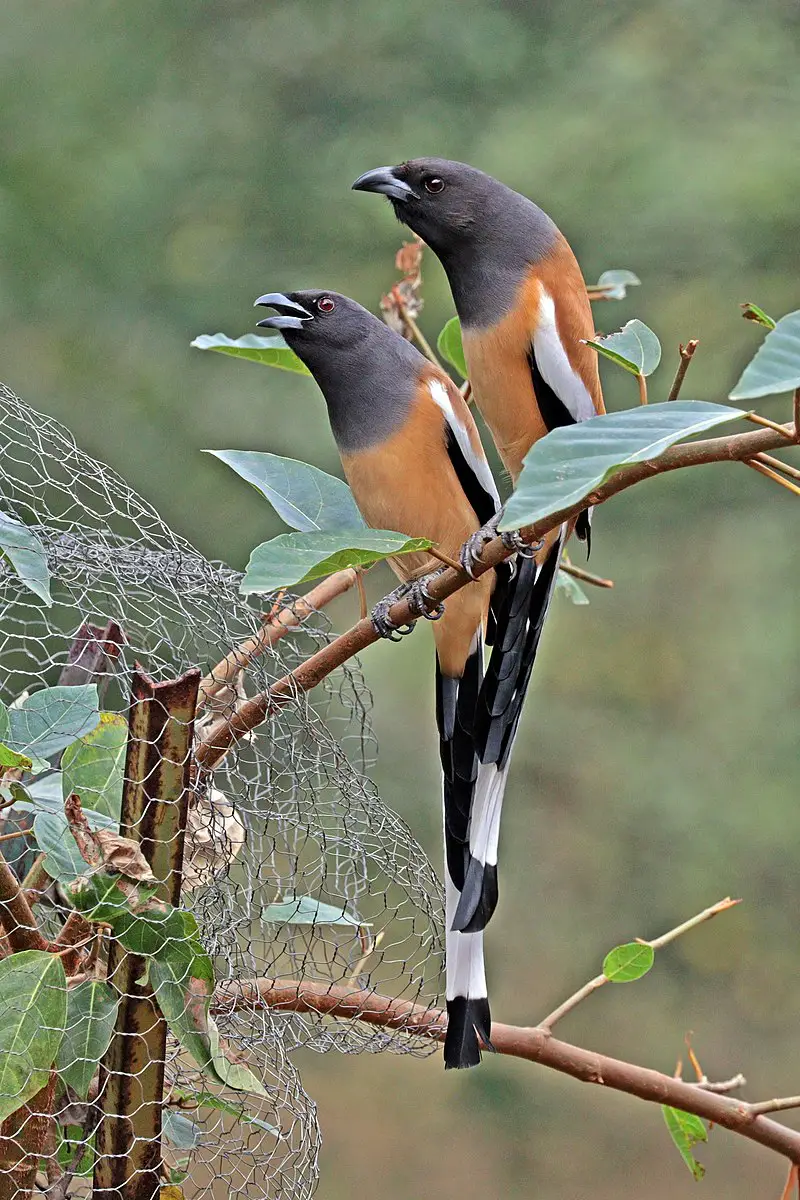
The Rufous Treepie is a member of the Corvidae family and native to the Indian Subcontinent, as well as parts of Southeast Asia. It has distinctive loud musical calls that make it easily recognizable.
This bird can be found in open scrub lands, agricultural areas, forests and even urban gardens due to its adaptability and omnivorous diet.
With its long tail feathers ranging from brown-black to greyish-brown on top with orange underneath; this species stands out among other birds.
They also have an interesting way of eating fruits: they peck at them while hovering midair. The Rufous Treepie is not only beautiful but also quite intelligent – their problem solving abilities are second only to those of primates.
Scientific classification:
| Kingdom | Animalia |
| Phylum | Chordata |
| Class | Aves |
| Order | Passeriformes |
| Family | Corvidae |
| Genus | Dendrocitta |
| Species | D. vagabunda |
Also Featured In: Native Pakistani Birds, Birds that Live in Uttar Pradesh
13. Jacanas
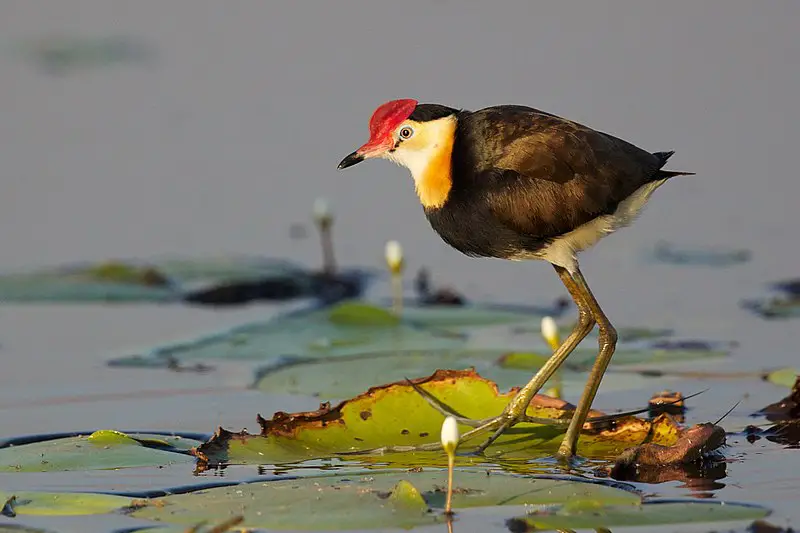
Jacanas are tropical waders belonging to the Jacanidae family. They have distinctive elongated toes and toenails which help them forage on floating or semi-emergent aquatic vegetation.
This adaptation gives them their nickname “Jesus birds” as they seem to be able to walk on water.
The female jacanas are also unique amongst bird species in that they take charge of nest building, incubation and caring for young while males perform courtship displays.
These unusual birds can be found throughout the world’s tropical regions where they inhabit wetlands such as swamps, marshes and shallow lakes with lily pads.
With a wide variety range due their special adaptations these beautiful creatures will surely continue living life at ease around our planet’s warmest waters.
Scientific classification:
| Kingdom | Animalia |
| Phylum | Chordata |
| Class | Aves |
| Order | Charadriiformes |
| Suborder | Thinocori |
| Family | Jacanidae Stejneger, 1885 |
Also Featured In: Beautiful Brazilian Birds, Water Birds Live around Us
14. Northern Storm Petrels
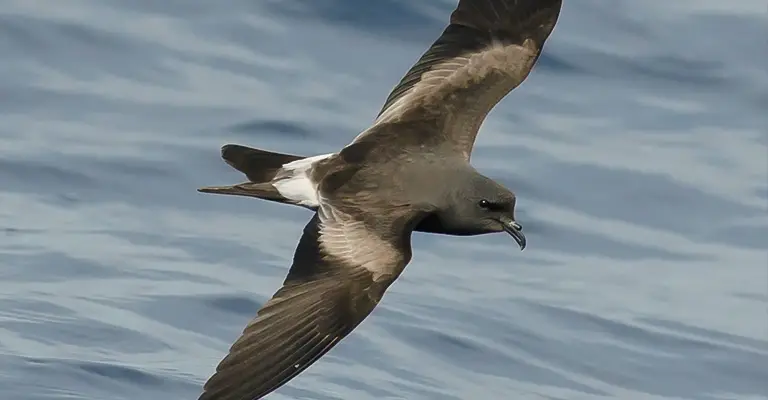
Northern storm petrels are one of the smallest seabirds, inhabiting oceans all over the world.
They have a unique ability to hover over water and pick planktonic crustaceans and small fish from the surface.
Northern storm petrels belong to the genus Hydrobates in family Hydrobatidae, part of Procellariiformes order.
This species was once lumped with austral storm petrel but recent studies show that they weren’t related closely which led them being split into two distinct species now.
These birds can be identified by their dark grey upperparts and wings along with white underparts when seen from afar while feeding on ocean’s surface.
Scientific classification:
| Kingdom | Animalia |
| Phylum | Chordata |
| Class | Aves |
| Order | Procellariiformes |
| Family | Hydrobatidae Mathews, 1912 |
| Genus | Hydrobates F. Boie, 1822 |
Also Featured In: Birds You’ll Find in the Sea, Common Denmark Birds
15. Stone-Curlew

Stone-curlews, also known as dikkops or thick-knees, are a family of birds that have adapted to live in tropical and temperate regions throughout the world.
They can be found in Africa, Asia and Australia with two or more species per region. Despite being classified as waders, most prefer dry arid habitats over moist wetlands.
Stone-curlews typically have long legs which help them navigate through their preferred terrain efficiently; some species even stand at an impressive height when standing on those long legs.
Additionally they feature cryptic plumage which helps them blend into their surroundings while hunting for prey such as insects and small mammals like rodents.
These unique bird’s calls are easily recognizable; it has been said that hearing one is similar to listening to someone whistling ‘Keee Weee’.
Scientific classification:
| Kingdom | Animalia |
| Phylum | Chordata |
| Class | Aves |
| Order | Charadriiformes |
| Suborder | Chionidi |
| Family | Burhinidae Mathews, 1912 |
Also Featured In: Birds Found in Hungary, Bulgarian Birds
16. Bee-Eater

Bee-eaters are one of the most beautiful and vibrant birds in existence. They have a slender body, long wings, down turned bills and their signature elongated central tail feathers which make them instantly recognizable from afar.
Their plumage is incredibly colorful with many shades ranging from blues to greens to reds that glisten when they fly through the air.
These stunning creatures can be found all over Africa, Asia, Southern Europe, Australia and New Guinea where they feed mainly on bees but also other insects like flies or wasps as well as small mammals such as lizards or rodents.
Bee-eaters live in colonies near rivers or wetlands so that they may easily hunt for food while staying close together for safety purposes.
Additionally it allows them to better display their impressive courtship dances during mating season.
Scientific classification:
| Kingdom | Animalia |
| Phylum | Chordata |
| Class | Aves |
| Order | Coraciiformes |
| Family | Meropidae Rafinesque, 1815 |
Also Featured In: Common Nigerian Birds, Common Serbian Birds
17. Coppersmith Barbet
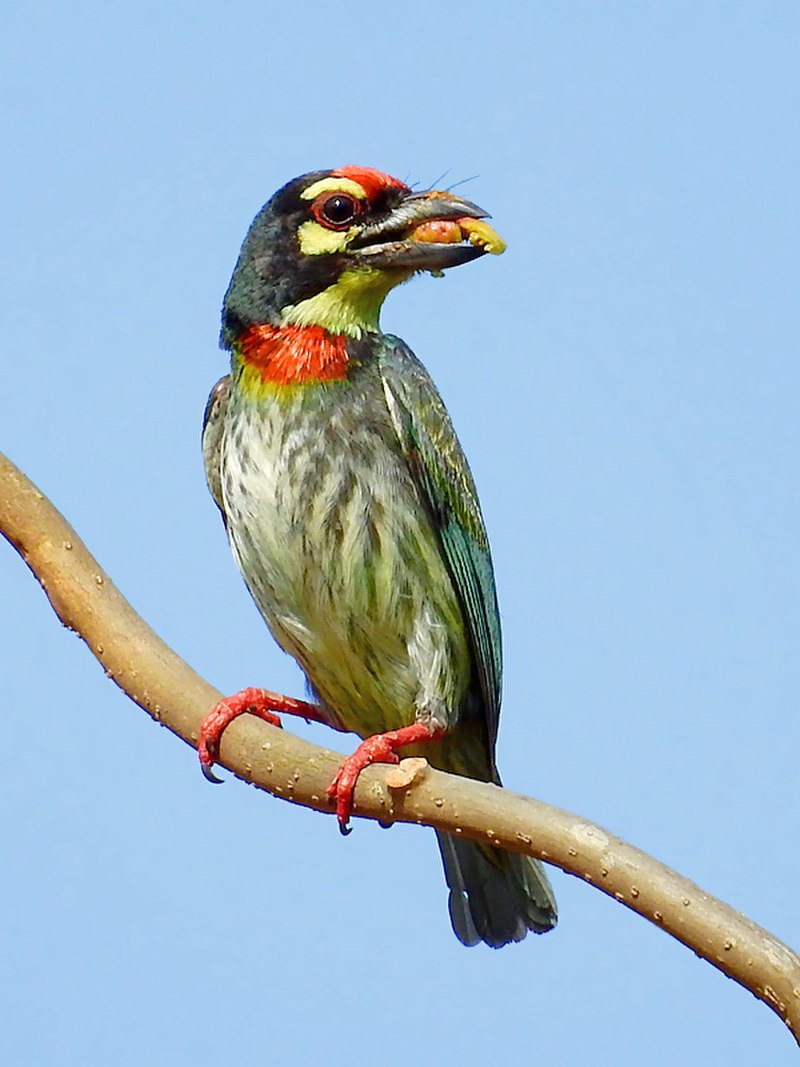
The Coppersmith barbet is an attractive Asian bird, easily recognizable by its bright crimson forehead and throat.
It has a call that sounds like a coppersmith striking metal with a hammer – hence its name.
These birds are found in the Indian subcontinent and parts of Southeast Asia where they build their nests inside trees, carving out holes for themselves.
They can often be seen perched high up on trees or wires during the day as they feed on fruit from nearby branches.
The vibrant colors of these birds make them stand out amongst other species in their habitat.
Scientific classification:
| Kingdom | Animalia |
| Phylum | Chordata |
| Class | Aves |
| Order | Piciformes |
| Family | Megalaimidae |
| Genus | Psilopogon |
| Species | P. haemacephalus |
Also Featured In: Most Common Types of Bangladeshi Birds, Common Birds of Mumbai
18. Darters
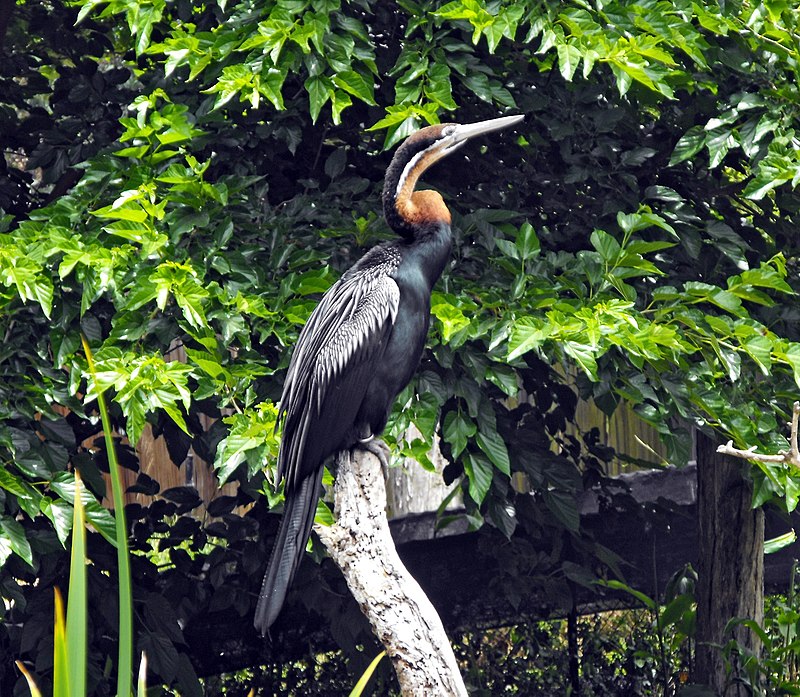
Darters are tropical waterbirds from the family Anhingidae, which includes four species. Three of these species are common and found in multiple locations while one is rarer and classified as near-threatened by IUCN.
Their most notable feature is their long neck which they use to dive into shallow waters for prey such as fish or frogs.
They have a slim body with large wings allowing them to soar high in the sky at great speeds making it difficult for predators to catch them during flight.
Darters also make regular visits to land where they bask in the sun on tree branches or rocky outcroppings.
These birds can be easily identified by their dark feathers, yellowish eyes, and orangey beak – all features that help distinguish them from other birds of similar size and coloration.
Scientific classification:
| Kingdom | Animalia |
| Phylum | Chordata |
| Class | Aves |
| Order | Suliformes |
| Family | Anhingidae Reichenbach, 1849[1] |
| Genus | Anhinga Brisson, 1760 |
Also Featured In: South Australian Birds, Small Kentucky Birds
19. True Owl
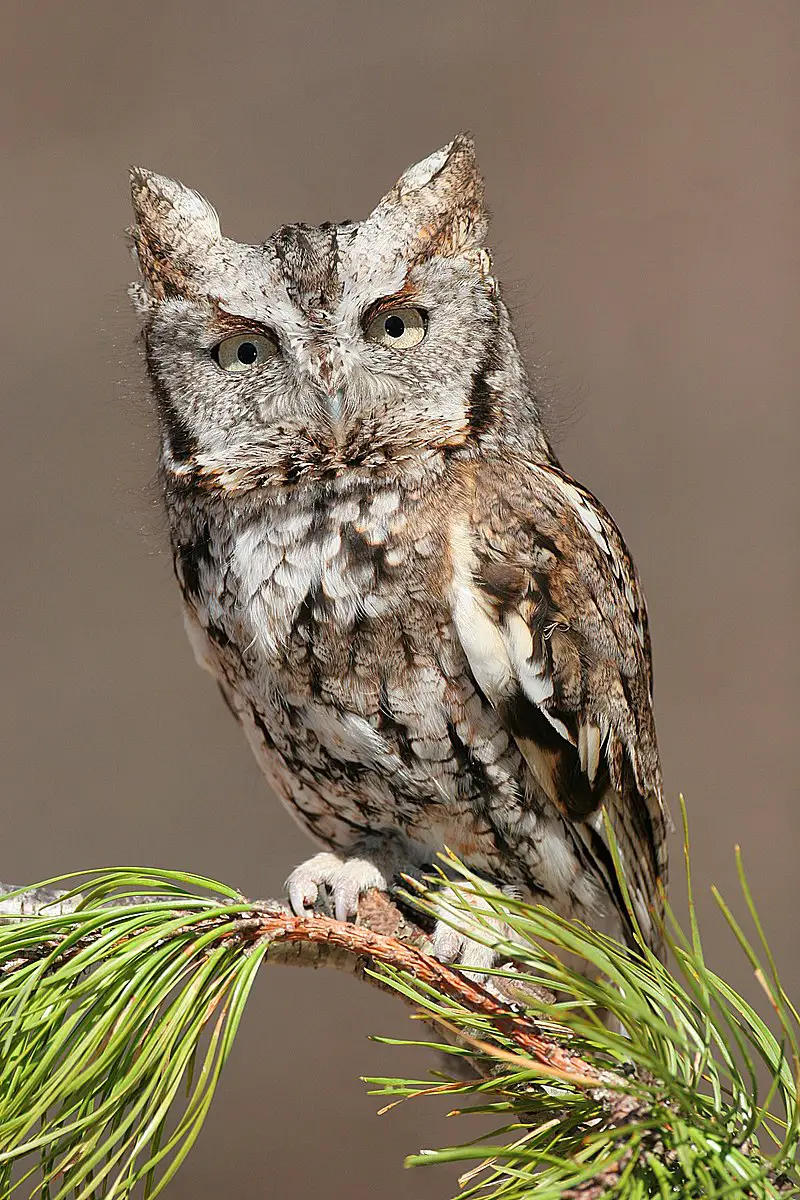
Owls are one of the two main families of owls, with Strigidae being the true owl family. With 230 species and 24 genera, this large bird family is found all around the world except for Antarctica.
Owls vary greatly in size and shape, but they typically have a round face with forward-facing eyes and a hooked bill to help them catch their prey.
They also possess asymmetrical ears that allow them to detect even faint sounds from great distances making them formidable predators at night.
Although solitary by nature, some species can be quite vocal while others may remain silent during daylight hours until sunset when they become active again looking for food under cover of darkness.
Scientific classification:
| Kingdom | Animalia |
| Phylum | Chordata |
| Class | Aves |
| Order | Strigiformes |
| Family | Strigidae Leach, 1820 |
Also Featured In: Birds You’ll Find in Night, Birds of Taiga
20. Old World Flycatchers
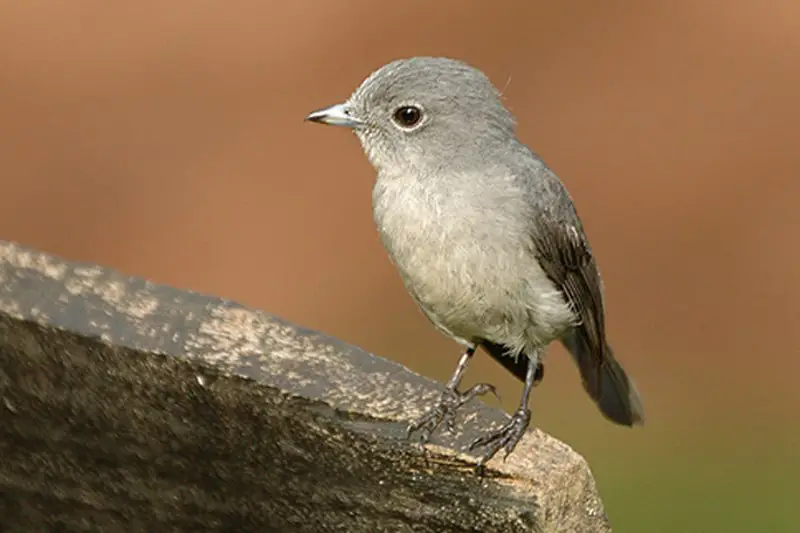
The Old World Flycatcher is a family of small passerine birds, native to Europe, Africa and Asia. They are mainly insectivorous arboreal birds that feed on insects they catch in the air or trees.
Their wingspan ranges from 5-11 inches long with males usually being slightly larger than females.
The coloration of these birds can range greatly depending on species but typically have dull greyish brown upperparts and pale undersides which help them blend into their environment for hunting purposes.
Bluethroat (Luscinia svecica) and Northern Wheatear (Oenanthe oenanthe) are two exceptions as they can be found in North America too.
These charming little creatures make fun additions to birdwatching lists all over the world because of their vibrant colors and interesting behaviors.
Scientific classification:
| Kingdom | Animalia |
| Phylum | Chordata |
| Class | Aves |
| Order | Passeriformes |
| Superfamily | Muscicapoidea |
| Family | Muscicapidae Fleming J., 1822 |
Also Featured In: Common Birds in Japan, Most Common Lithuanian Birds
21. Frogmouth
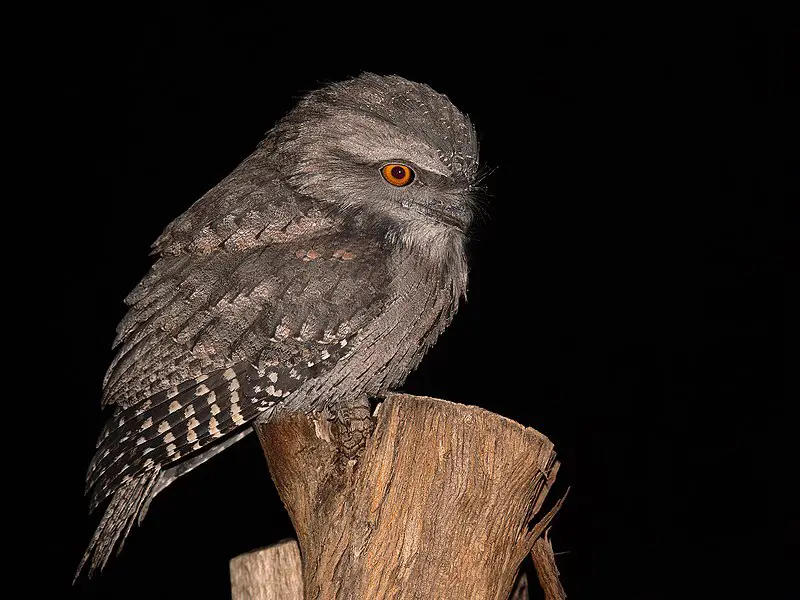
The Frogmouth is a nocturnal bird that belongs to the same family as owlet-nightjars, swifts and hummingbirds.
They have large flattened hooked bills with huge frog-like gape which helps them capture insects during night time.
Three species of Podargus are found in Australia and New Guinea only – they have massive eyes that allow for excellent night vision.
Their bodies are generally grey or brownish in colour with cryptic markings for camouflage when roosting during day light hours.
Generally known as quiet birds, their loud wailing call can be heard at dusk or dawn near river banks or wetlands where they live alone or form pairs throughout breeding season.
The diet of these fascinating creatures consists mainly of flying insects such as moths, beetles & cicadas etc., but on occasion will consume small vertebrates like lizards and frogs too.
Scientific classification:
| Kingdom | Animalia |
| Phylum | Chordata |
| Class | Aves |
| Clade | Strisores |
| Order | Podargiformes Matthews, 1918 |
| Family | Podargidae Gray, 1847 |
Also Featured In: Birds of the Philippines, Common Philippines Birds
22. Pittas
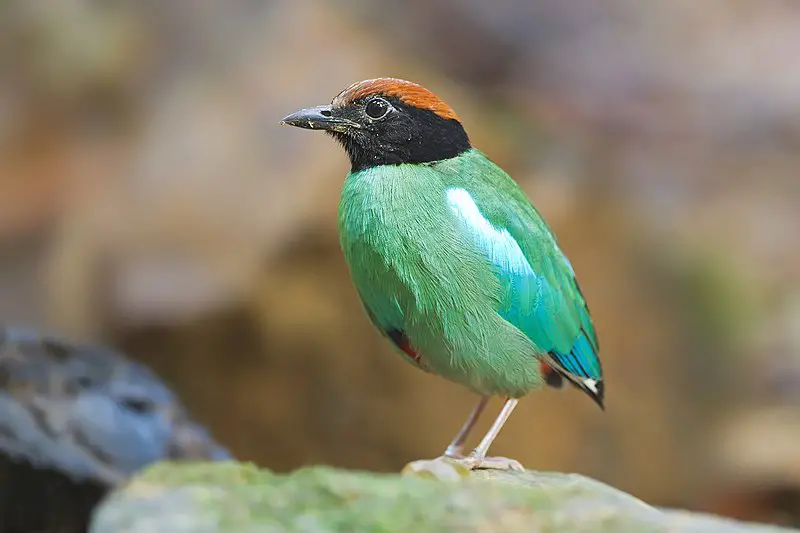
Pittas are a family of passerine birds known for their vibrant colors and unique appearance. They can be found in Asia, Australasia and Africa with around 40 to 42 species existing today.
These Old World suboscines have closest relatives among other bird genera such as Smithornis and Calyptomena.
Pittas inhabit tropical forests where they hop from branch to branch searching for insects or worms on the ground below them.
Their feathers are stunningly colored with combinations of blue, green, copper, purple or even yellow making them stand out amongst others in the forest canopy.
Scientific classification:
| Kingdom | Animalia |
| Phylum | Chordata |
| Class | Aves |
| Order | Passeriformes |
| Suborder | Tyranni |
| Infraorder | Eurylaimides |
| Superfamily | Pittoidea |
| Family | Pittidae Authority disputed.[a] |
Also Featured In: Birds that Live in Borneo Island, Birds that Found in Sumatra
23. Treeswift
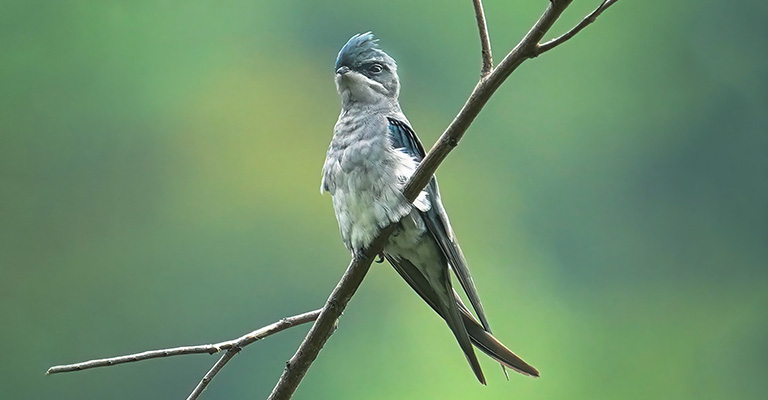
Treeswifts are a family of aerial near passerine birds, closely related to true swifts. They have long wings and short tails with a distinctive crest on the top of their heads.
These small-to medium sized birds range in size from 15 to 30 cm, and can be found across India, Southeast Asia, Indonesia, New Guinea and Solomon Islands.
Treeswift’s diet consists mainly of flying insects which they catch while gliding through the air at high speeds.
When not hunting for food these agile flyers spend much time perched up high in trees or circling around tree tops looking out for potential prey below them.
As such they play an important role in controlling insect populations as well as providing valuable insight into local bird life by being easily spotted during migratory seasons when large flocks gather together searching for suitable nesting grounds before continuing their journey southwards towards warmer climates during winter months.
Scientific classification:
| Kingdom | Animalia |
| Phylum | Chordata |
| Class | Aves |
| Order | Apodiformes |
| Family | Hemiprocnidae Oberholser, 1906 |
| Genus | Hemiprocne Nitzsch, 1829 |
24. Shrike
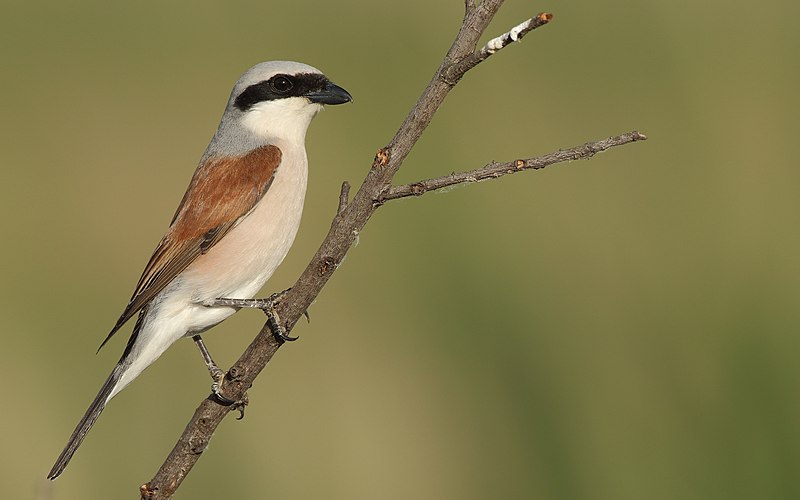
Shrikes are small passerine birds of the family Laniidae, with 34 species in four genera. They get their name from Old English word “scrīc”, which refers to their shriek-like call.
These birds have earned the nickname ‘butcherbirds’ due to their feeding habits; they impale prey on thorns or barbed wire fences for later consumption.
Shrikes also tend to be aggressive predators and hunt a wide range of animals such as insects, small reptiles, rodents and even other smaller bird species.
In terms of physical appearance, these songbirds can vary greatly depending on the specific genus but usually boast a large hooked bill atop an impressive crest along with bright colors like gray, black or brownish hues across its feathers.
It’s clear shrike is quite remarkable creature that has gained notoriety for both hunting prowess and distinctive vocalizations.
Scientific classification:
| Kingdom | Animalia |
| Phylum | Chordata |
| Class | Aves |
| Order | Passeriformes |
| Superfamily | Corvoidea |
| Family | Laniidae Rafinesque, 1815 |
Also Featured In: Egyptian Birds, Birds that Live in Croatia
25. Hoopoes
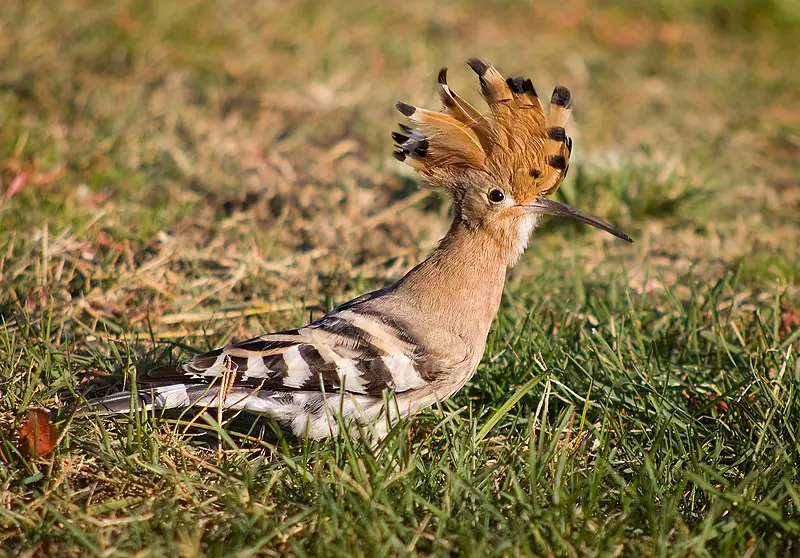
Hoopoes are a fascinating species of bird, found across Africa, Asia and Europe. They have beautiful plumage with unique ‘crowns’ of feathers on their heads.
Three living and one extinct species exist – although for some time they were all classed as the same species: Upupa epops. Some taxonomists still believe this to be true.
These birds are often associated with royalty due to the impressive crown-like crest atop their head, adding an extra element of mystery and exoticism to these creatures.
Hoopoes can also produce loud calls which sound like “hoo-poo” hence why they’ve been given such an apt name.
Scientific classification:
| Kingdom | Animalia |
| Phylum | Chordata |
| Class | Aves |
| Order | Bucerotiformes |
| Family | Upupidae Leach, 1820 |
| Genus | Upupa Linnaeus, 1758 |
Also Featured In: African Birds, East African Birds
26. Crab-Plover
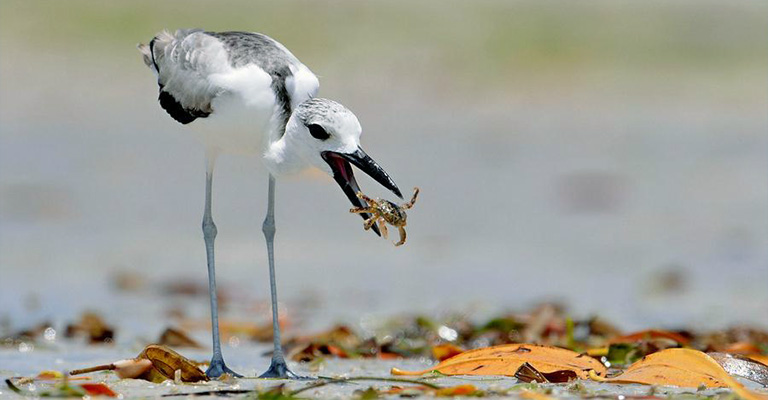
The crab-plover is an exceptional bird which belongs to its own family, Dromadidae. It appears to be closely related to the waders and other Charadriiformes such as auks, gulls and thick-knees.
This species of bird has a unique look; it is white with black markings on its head and wings. Its long bill helps them dig for food in sand or mudflats.
They can also fly up into the air when disturbed by predators or people too close for comfort.
The crab plover spends most of its life near beaches where they feed on crabs, fish eggs and small insects found there.
These birds are highly social during breeding season but solitary at other times throughout their annual cycle making them difficult creatures to spot out in the wild but well worth trying.
Scientific classification:
| Kingdom | Animalia |
| Phylum | Chordata |
| Class | Aves |
| Order | Charadriiformes |
| Suborder | Lari |
| Family | Dromadidae GR Gray, 1840 |
| Genus | Dromas Paykull, 1805 |
| Species | D. ardeola |
Also Featured In: Birds that Migrate in United Arab Emirates,
27. Cormorants
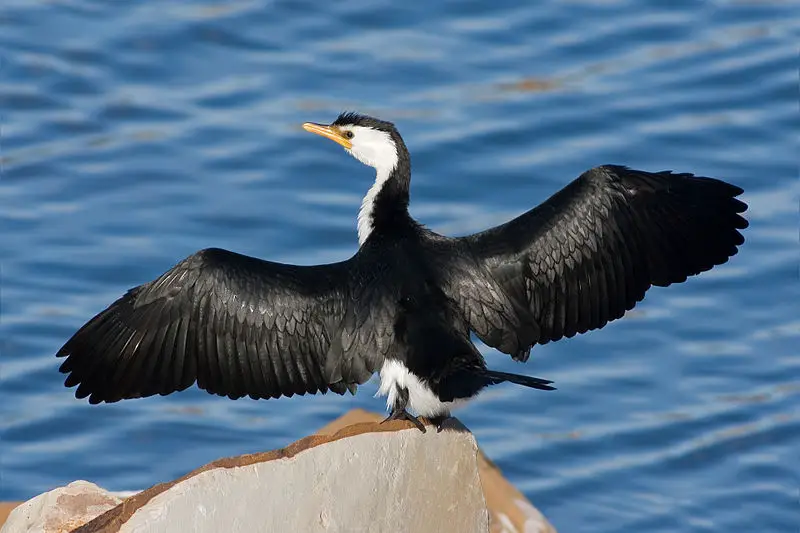
Cormorants are a family of aquatic birds found around the world. They include 40 species, such as great cormorants and common shags.
In Britain, these two species are the most commonly seen in their natural habitats.
Cormorants have long necks, webbed feet and can be identified by their glossy black feathers which they use to help them swim through water with ease as they hunt for food like fish or crustaceans.
They have an impressive wingspan often reaching up to five feet across when fully extended.
Despite being strong swimmers, these birds also enjoy spending time perched on rocks near rivers or shorelines where they will preen themselves in order to keep clean and dry during cooler weather conditions
Scientific classification:
| Kingdom | Animalia |
| Phylum | Chordata |
| Class | Aves |
| Order | Suliformes |
| Family | Phalacrocoracidae Reichenbach, 1850 |
Also Featured In: Most common Birds in France, Birds that Live in the Ocean
28. Rail
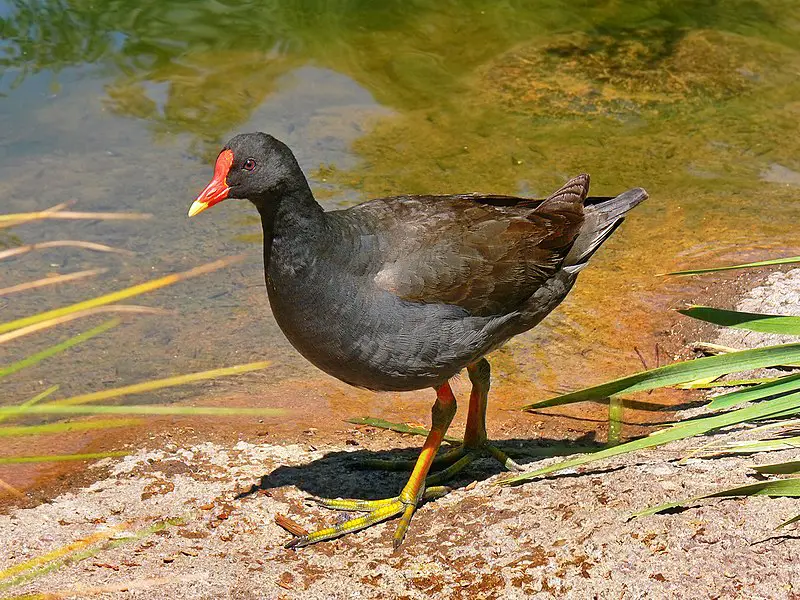
Rails are a diverse family of birds, ranging from small to medium size and living in habitats across the world.
They can be found around wetlands, as well as any other land-based environment except for dry deserts, polar regions or areas with persistent snow cover.
These ground-dwellers have short legs and long toes that help them maneuver through wetland vegetation easily.
Tey typically feed on insects and aquatic invertebrates but will also eat seeds and berries when available.
Species such as coots, crakes and gallinules have evolved different bill shapes to allow them to navigate their environments more efficiently while searching for food.
Rails live both alone or in pairs depending on the species; some migrate seasonally while others remain at one location year round.
Scientific classification:
| Kingdom | Animalia |
| Phylum | Chordata |
| Class | Aves |
| Order | Gruiformes |
| Family | Rallidae Rafinesque, 1815 |
Also Featured In: Swamps Birds You Should Know, Wetlands Birds You Should Know
29. Hornbill
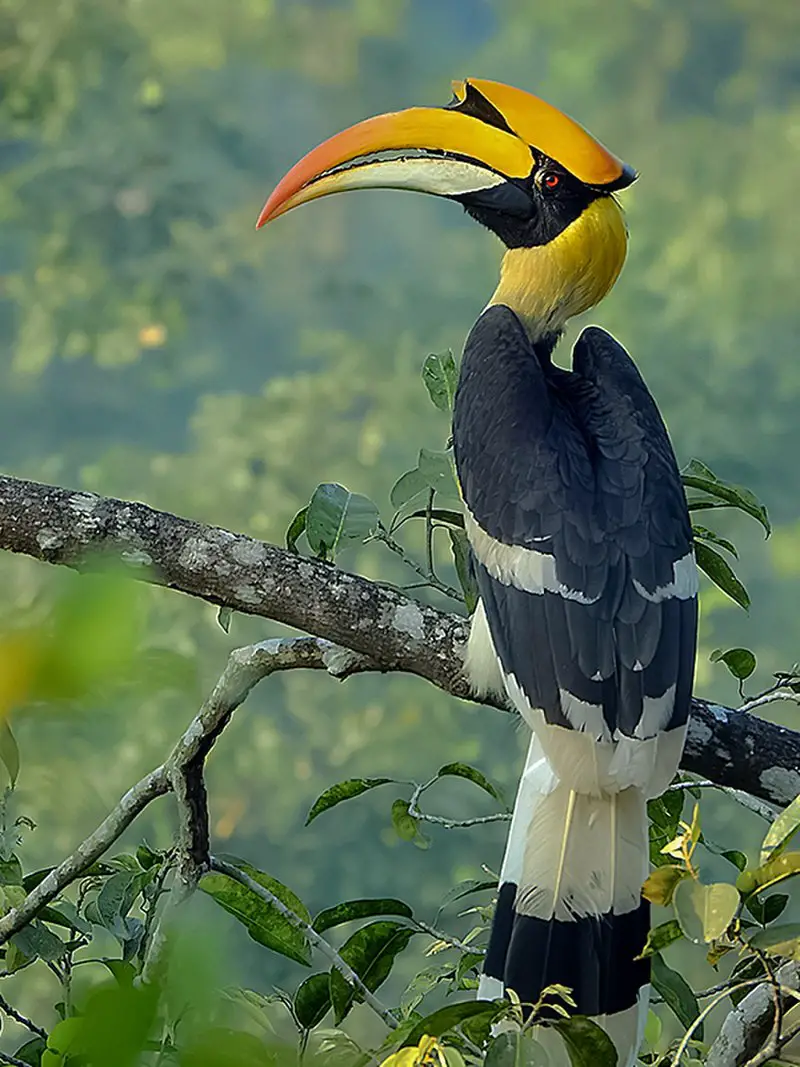
Hornbills are a tropical and subtropical bird species with characteristic long, curved bills. Their English and scientific names both refer to the shape of their bill which resembles that of a cow’s horn.
They have strong beaks for cracking open hard-shelled fruits as well as powerful wings for flying between trees or over great distances in search of food or mates.
Hornbills also feature beautiful plumage ranging from white to black feathers with yellow, brown, red and blue accents on the head, neck and back areas depending on the species.
In addition they often display brightly coloured casques – helmet like structures – atop their upper mandible adding further visual appeal to these majestic birds.
Scientific classification:
| Kingdom | Animalia |
| Phylum | Chordata |
| Class | Aves |
| Order | Bucerotiformes |
| Family | Bucerotidae Rafinesque, 1815 |
Also Featured In: Birds of South African, Common Birds in the Cities
30. Coraciiformes
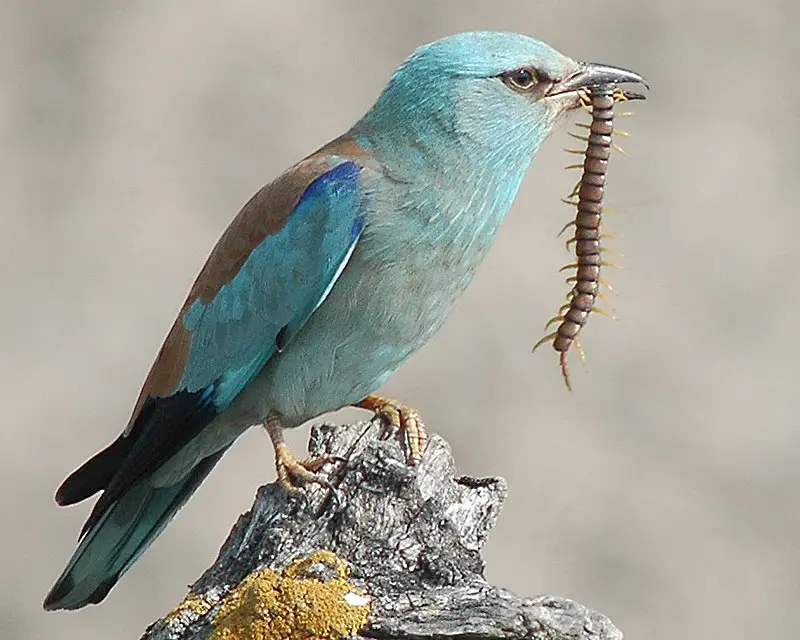
Coraciiformes birds are a group of beautiful and vibrant species, including kingfishers, bee-eaters, rollers, motmots and todies. They have syndactyly feet with three forward pointing toes (with their third and fourth fused at the base).
However in some kingfisher species one toe is absent. This order of bird has an interesting behavior known as ‘slamming’ which links them all together.
These amazing creatures can be seen across many parts of the world from forests to deserts.
Their colorful feathers make them stand out amongst other birds making sure they don’t go unnoticed.
Scientific classification:
| Kingdom | Animalia |
| Phylum | Chordata |
| Class | Aves |
| Clade | Picodynastornithes |
| Order | Coraciiformes Forbes, 1884 |
Also Featured In: Birds of Argentina, Guam Birds You Need to See
31. Skuas
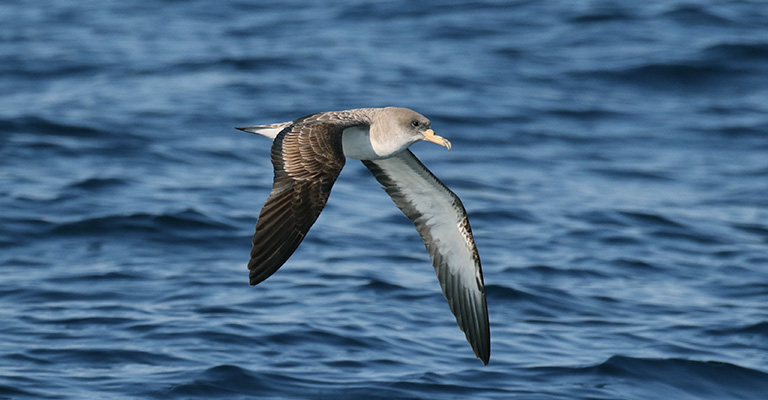
Skuas are a group of predatory seabirds with seven species, all belonging to the genus Stercorarius.
They are also known as “Jaegers” in North America and their name originates from the Faroese word for Great Skua – skúgvur.
These birds typically inhabit coastal areas or open oceans where they feed on fish, krill and other marine creatures.
Skuas can be distinguished by their pointed wings which help them fly long distances while hunting food.
Their distinctive colouration varies depending on age and habitat but generally includes greyish brown upperparts and white underparts with black streaks along its belly area.
The overall size ranges from 24-40 cm making these one of the larger sea bird species.
Scientific classification:
| Kingdom | Animalia |
| Phylum | Chordata |
| Class | Aves |
| Order | Charadriiformes |
| Suborder | Lari |
| Family | Stercorariidae Gray, 1871 |
| Genus | Stercorarius Brisson, 1760 |
Also Featured In: Birds of Morocco, Armenian Birds You Should Know
32. Buttonquail
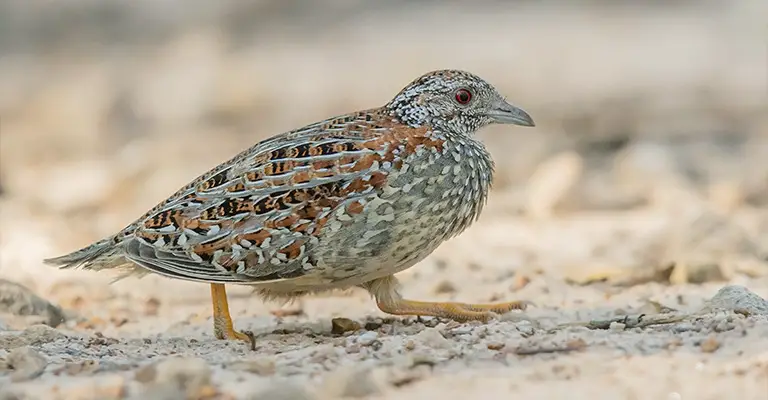
Buttonquails are small, terrestrial birds belonging to the family Turnicidae. They can be found in warm grasslands of Asia, Africa, Europe and Australia.
There are 18 species found across two genera; most being placed under the genus Turnix with a single species known as Ortyxelos.
These birds share a superficial resemblance to quail from Phasianidae but lack any close relation.
Buttonquails avoid flying and instead prefer running on their short legs for navigational purposes.
In terms of physicality they have drab colouring which comprises mostly browns or greys whilst sporting distinctive white patches around their eyes making them easy to identify within dense foliage areas where they usually hide away during times of danger or distress.
Scientific classification:
| Kingdom | Animalia |
| Phylum | Chordata |
| Class | Aves |
| Order | Charadriiformes |
| Family | Turnicidae GR Gray, 1840 |
Also Featured In: Birds that Live around Victoria, Urban Birds of Hong Kong
33. Austral Storm Petrels
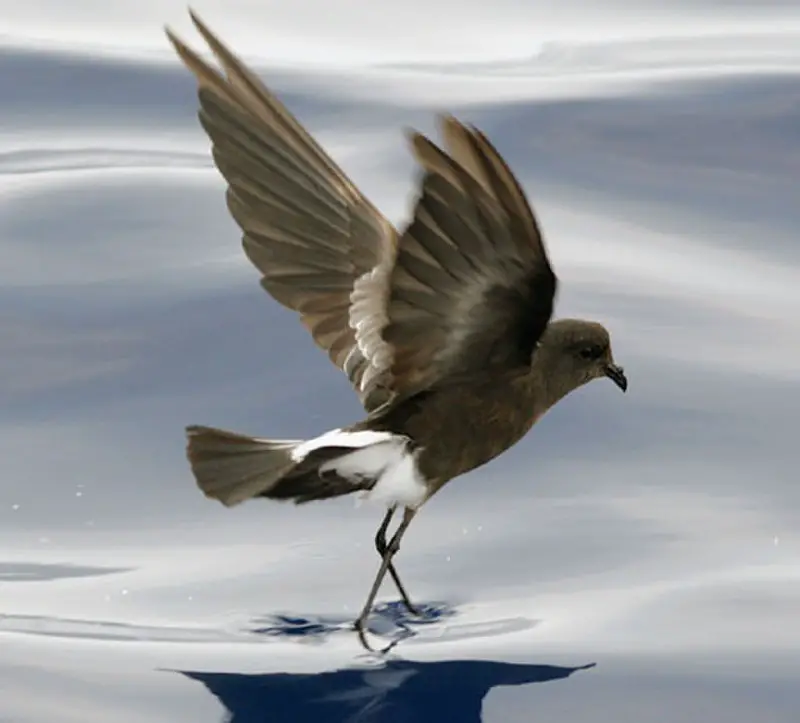
Austral Storm Petrels are the smallest of seabirds, belonging to the family Oceanitidae and order Procellariiformes.
They have a cosmopolitan distribution across all oceans, with their flight being fluttering and sometimes bat-like in appearance.
These birds feed on planktonic crustaceans as well as small fish that they pick from the surface while hovering over it.
Their plumage is mostly dark grey or blackish brown above; underparts may be white or mottled gray.
The feet vary between species but usually have pale yellow webs and claws which help them move easily through water when searching for food.
Austral storm petrels often make nests on remote islands where these birds can breed safely without any disturbances from humans during their nesting season.
Scientific classification:
| Kingdom | Animalia |
| Phylum | Chordata |
| Class | Aves |
| Order | Procellariiformes |
| Family | Oceanitidae Forbes, 1881 |
Also Featured In: Birds that You’ll Find in Puerto Rico, British Virgin Islands Birds You Need to See
34. Swifts
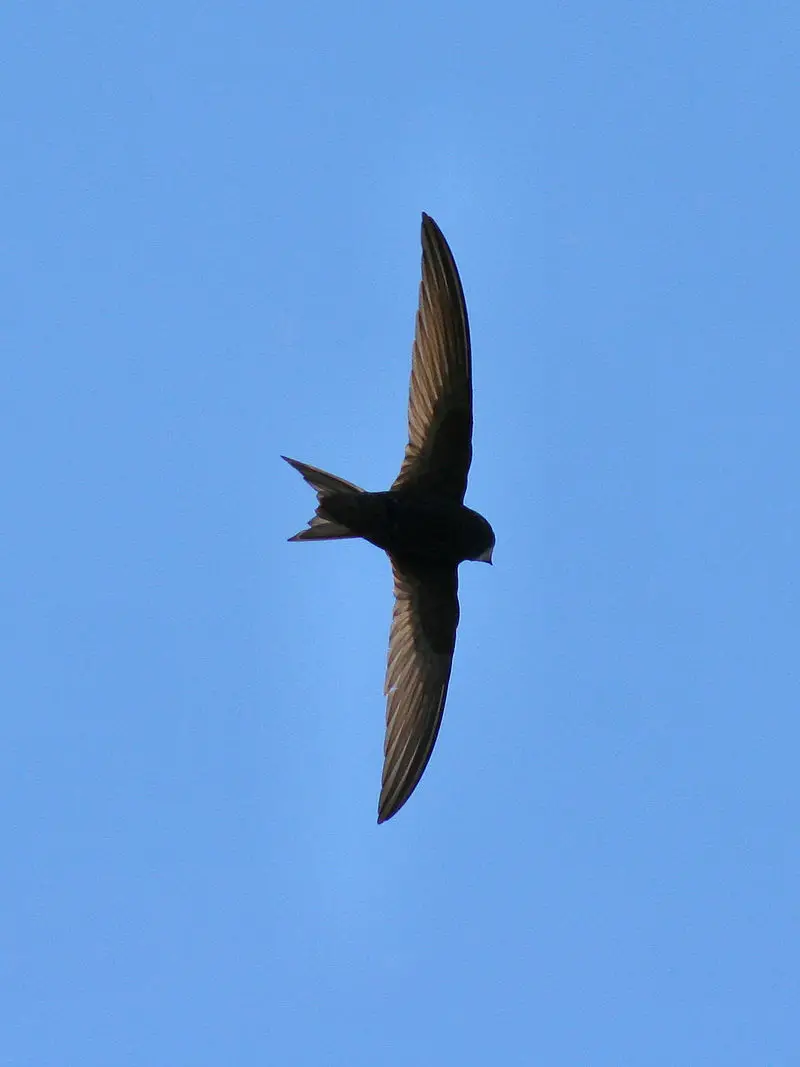
Swifts are small, aerial birds that belong to the Apodidae family. They look similar to swallows but they aren’t related in any way.
Swifts have evolved differently from other passerines and instead share an order with hummingbirds – the Apodiformes.
The Hemiprocnidae also shares a close relationship with swifts, being referred to as ‘treeswift’ due to their affinity for perching on trees rather than flying through the air like regular swifts do.
While these two species may appear quite similar at first glance, closer inspection will reveal vast differences between them which has come about over time via convergent evolution.
Scientific classification:
| Kingdom | Animalia |
| Phylum | Chordata |
| Class | Aves |
| Order | Apodiformes |
| Family | Apodidae Hartert, 1897 |
Also Featured In: Common birds in Mozambique , Birds You’ll Find in Moldova
35. Common Emerald Dove
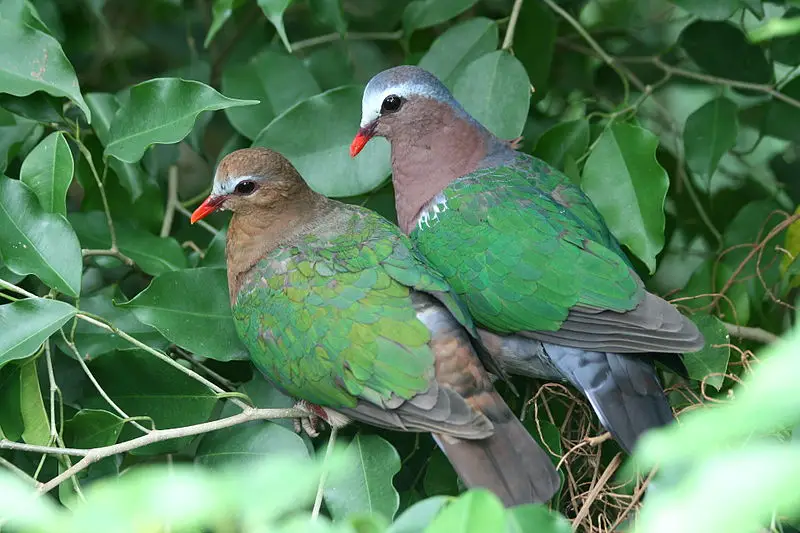
The Common Emerald Dove is a beautiful bird that can be found in tropical and subtropical parts of the Indian Subcontinent and Southeast Asia.
Its distinctive features include its grey-capped head, while its wings are an emerald green colour.
It has also earned itself the nickname “green dove” or “green-winged pigeon”. This species plays an important role in Tamil Nadu’s ecology, which makes it fitting for them to have named it their state bird.
The Pacifric Emerald Dove is closely related to this species but they differ slightly in appearance and habitat preferences; however both make great pets due to being gentle by nature.
Scientific classification:
| Kingdom | Animalia |
| Phylum | Chordata |
| Class | Aves |
| Order | Columbiformes |
| Family | Columbidae |
| Genus | Chalcophaps |
| Species | C. indica |
Also Featured In: Birds in Sri Lanka, Birds that Charles Darwin Studied
36. Frigatebird
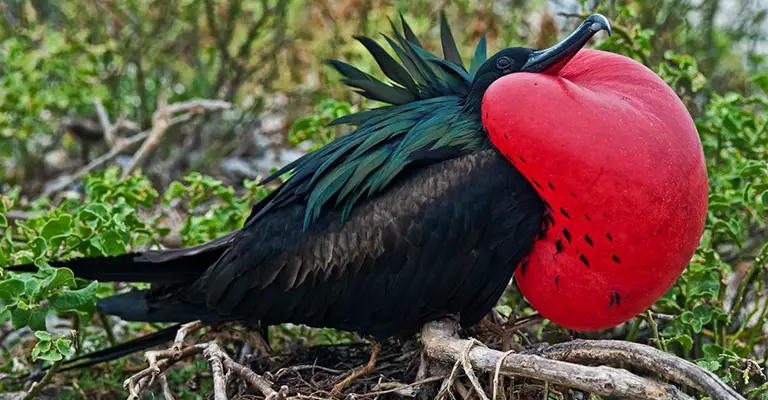
Frigatebirds are a beautiful and mysterious family of seabirds, found in all tropical and subtropical oceans. The five extant species have glossy black plumage, long forked tails, and lengthy hooked bills.
During the breeding season males display a bright red gular pouch which they inflate to attract mates. Females have white underbellies year-round giving them an elegant contrast against their darker feathers.
They spend most of their lives soaring with minimal effort over warm ocean waters seeking food such as fish or squid taken from the surface or plucked out of midair by other birds.
Frigatebirds often nest on isolated islands due to lack of predators yet still manage to travel incredibly large distances between feeding grounds every day making them truly remarkable creatures.
Scientific classification:
| Kingdom | Animalia |
| Phylum | Chordata |
| Class | Aves |
| Order | Suliformes |
| Family | Fregatidae Degland & Gerbe, 1867 |
| Genus | Fregata Lacépède, 1799 |
Also Featured In: Birds of Ecuador, Birds You’ll Find in the Marshall Islands
37. Cuckooshrike
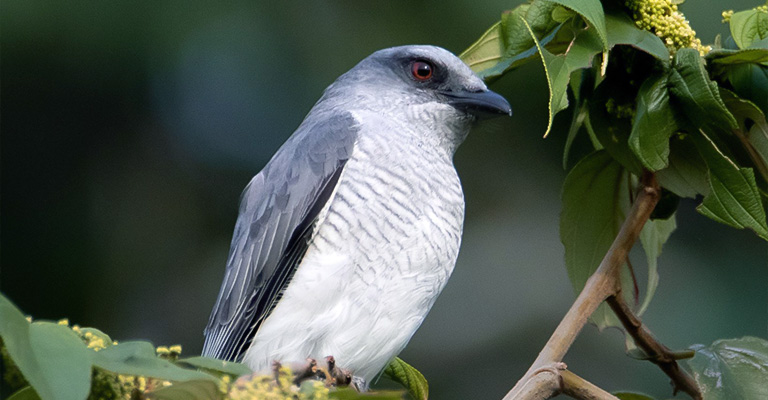
Cuckooshrikes are small to medium-sized passerine birds found mainly in the subtropical and tropical regions of Africa, Asia, and Australasia. They are usually arboreal, feeding on insects or fruit near foliage.
They have a stout bill with long wings and tails that can be used for balancing while perched on branches.
Cuckooshrike plumage is mostly grayish brown but some species may also feature black spots or stripes. The juvenile cuckooshrikes typically show more yellowish coloration than adults do.
These birds form monogamous pairs which often remain together year round defending their territory from other species as well as potential rivals within their own family group.
Scientific classification:
| Kingdom | Animalia |
| Phylum | Chordata |
| Class | Aves |
| Order | Passeriformes |
| Infraorder | Corvides |
| Family | Campephagidae Vigors, 1825 |
Also Featured In: Top Birds of Rwanda, Birds of New Caledonia
38. Drongos
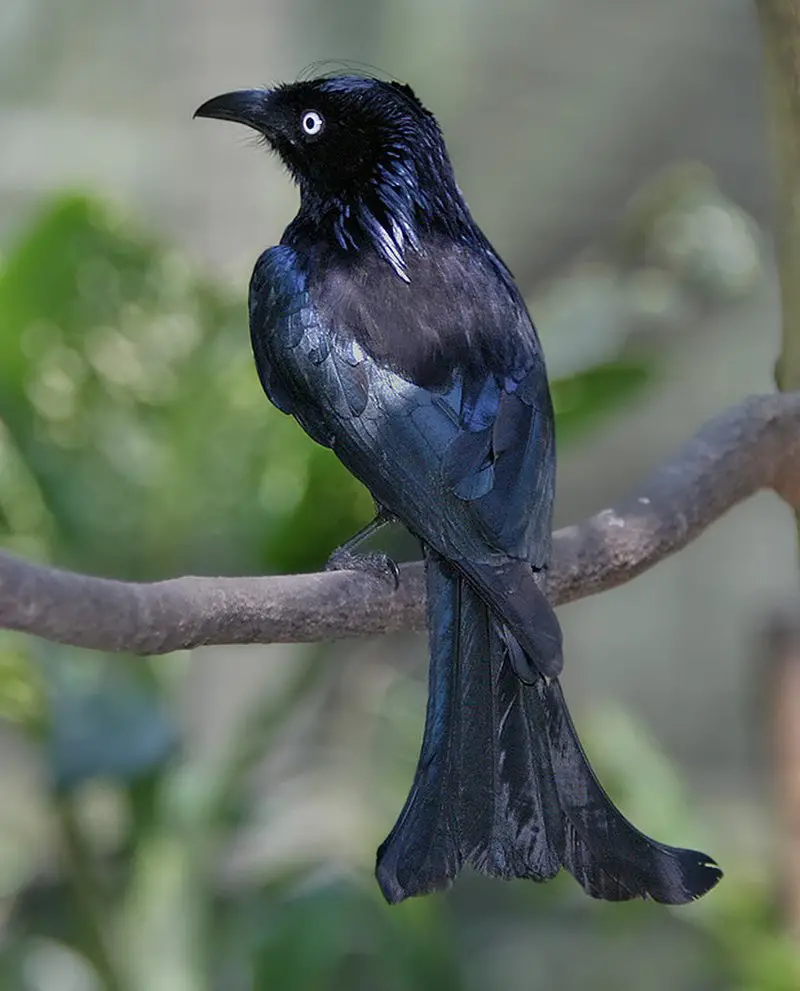
Drongos are an Old World tropical family of passerine birds belonging to the Dicruridae genus.
They have short legs, forked tails and a distinctive upright stance when perched.
Depending on the species they may be mostly black or dark grey in colour with some having elaborate tail decorations.
Drongos feed mainly on insects and small birds – catching them both in flight and from the ground.
They also sometimes eat fruit, nectar and even carcasses.
The drongo’s unique adaptations make it one of nature’s most successful hunters; able to survive almost anywhere in their natural range across Africa, Asia & Australia.
Scientific classification:
| Kingdom | Animalia |
| Phylum | Chordata |
| Class | Aves |
| Order | Passeriformes |
| Superfamily | Corvoidea |
| Family | Dicruridae Vigors, 1825 |
| Genus | Dicrurus Vieillot, 1816 |
Also Featured In: Birds of United Arab Emirates, Savanna Birds You Need to See
39. Nightjars
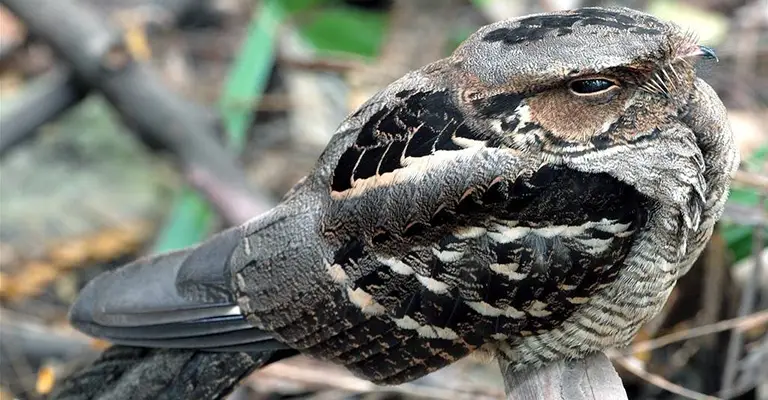
Nightjars are fascinating nocturnal or crepuscular birds belonging to the Caprimulgidae family. These medium-sized birds have long wings, short legs and very small bills.
They can be found across many parts of the world in forests, grasslands and scrubland habitats.
Nightjars feed on insects such as moths, beetles, crickets and cicadas which they catch with their sharp eyesight during night time flights over open fields when hunting for food.
Their scientific name ‘Caprimulgidae’ is derived from an old folktale that claims these birds suck milk from goats.
In reality though, they are harmless creatures who pose no threat to livestock whatsoever.
Nightjars make a variety of different calls ranging from whistles to chirps all throughout the night – adding further mystery to this amazing species.
Scientific classification:
| Kingdom | Animalia |
| Phylum | Chordata |
| Class | Aves |
| Clade | Strisores |
| Order | Caprimulgiformes Ridgway, 1881 |
| Family | Caprimulgidae Vigors, 1825 |
Also Featured In: Birds of Israel, Birds that Live in Guyana
40. Chestnut-Bellied Sandgrouse
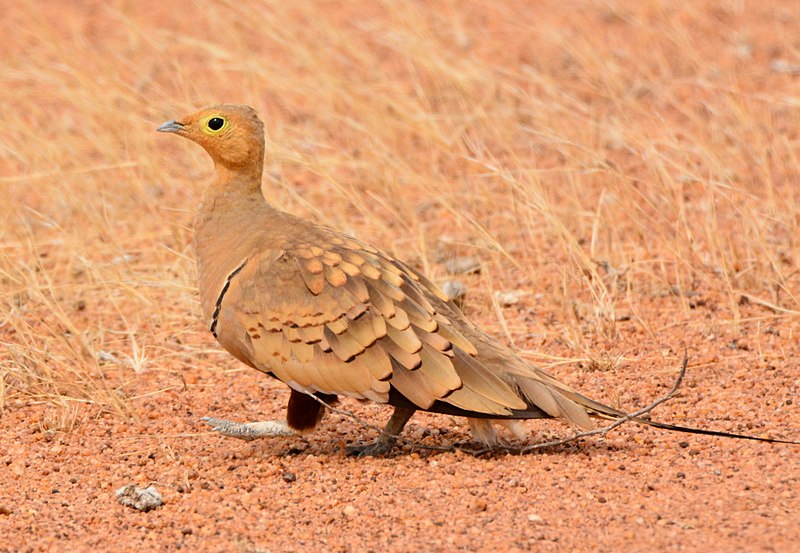
The Chestnut-bellied sandgrouse is a species of bird found in northern and central Africa, as well as western and southern Asia.
It has six recognised subspecies which differ in plumage colouration; males typically have mostly light buffy brown feathers with darker bars on the wings, while females are greyer with paler head markings.
These birds prefer semi-arid regions such as deserts or grasslands where they eat seeds from plants like grasses, herbs and shrubs.
They can be nomadic depending on food availability but tend to be sedentary during mating season when they form small groups called leks for courtship displays involving intricate feather ruffling and strutting around potential mates.
The Chestnut-bellied Sandgrouse is an important part of its native ecosystems due to their role in dispersing plant seeds over large areas through defecating them after ingestion.
Scientific classification:
| Kingdom | Animalia |
| Phylum | Chordata |
| Class | Aves |
| Order | Pterocliformes |
| Family | Pteroclidae |
| Genus | Pterocles |
| Species | P. exustus |
Also Featured In: Oman Birds, Hawaii Big Island Birds You Should Know
41. Ashy Woodswallow
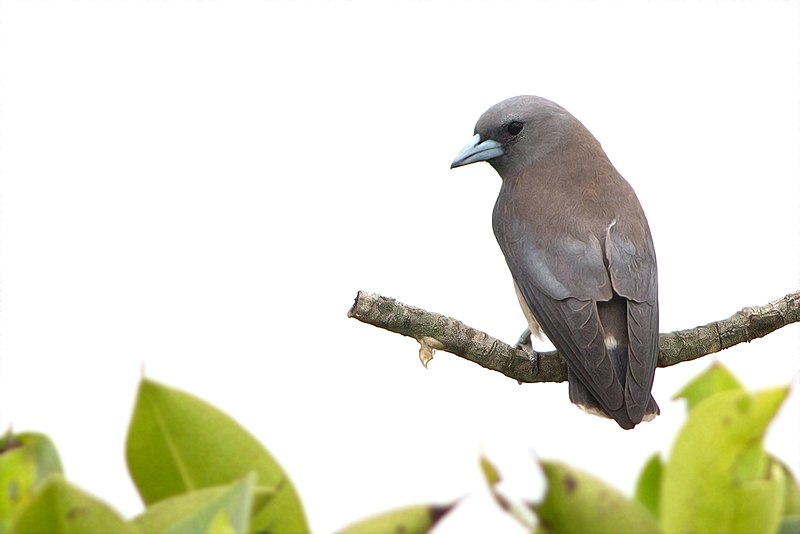
The Ashy Woodswallow is a small bird found in South Asia. It has a short, curved bill and long wings that make it appear stocky when perched.
This species of woodswallow typically spends time high on power lines or tall bare trees but can often be seen around palm tree-dominated areas too.
Their ashy gray coloration allows them to blend into the canopy making them difficult to spot at times.
They travel in groups and are very social birds who rely heavily on one another for protection from predators such as owls and falcons.
Despite their shyness, these fascinating little creatures are incredibly important pollinators of various plants across the region which makes protecting their habitats all the more essential.
Scientific classification:
| Kingdom | Animalia |
| Phylum | Chordata |
| Class | Aves |
| Order | Passeriformes |
| Family | Artamidae |
| Genus | Artamus |
| Species | A. fuscus |
Also Featured In: Maldives birds, Birds That You’ll See in Kaziranga National Park
42. Plover
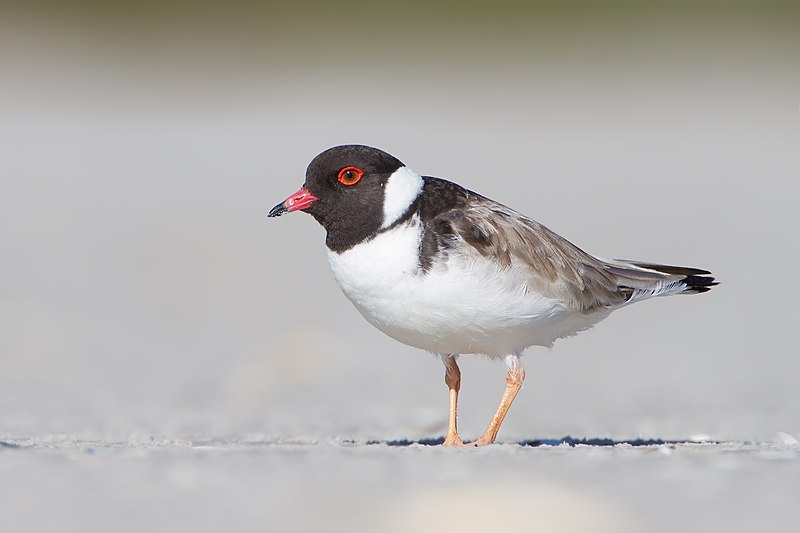
Plovers are a diverse group of wading birds, encompassing approximately 66 different species. They belong to the subfamily Charadriinae and are found in various regions of the world (excluding the Sahara).
Plovers are often referred to as “dotterel” and are closely related to lapwings, which consist of around 20 species.
These birds are known for their distinctive behavior patterns, including running instead of flying when threatened, and their unique breeding habits, such as nesting on beaches and exposed grasslands.
Plovers are considered a symbol of love and devotion in some cultures and have been featured in various mythological stories throughout history.
With their striking appearance and intriguing characteristics, plovers are a fascinating group of birds that continue to captivate researchers and enthusiasts alike.
Scientific classification:
| Kingdom | Animalia |
| Phylum | Chordata |
| Class | Aves |
| Order | Charadriiformes |
| Family | Charadriidae |
| Subfamily | Charadriinae Leach, 1820 |
Also Featured In: Flocks Birds around Us, Birds You’ll Find in Vancouver Island
43. Flamingos
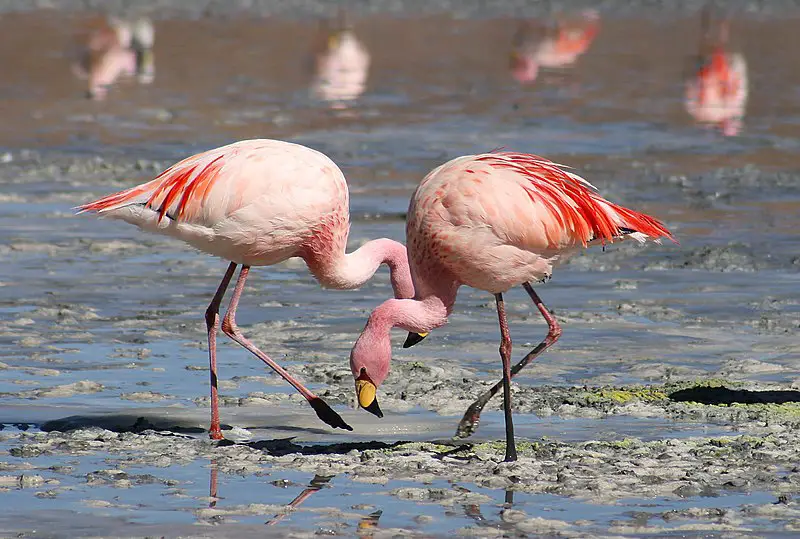
Flamingos are a type of water bird that belong to the Phoenicopteriformes group. They are known for their distinctive pink coloring and long, thin legs.
Flamingos are closely related to grebes and are part of the Mirandornithes clade. These birds are well-documented in the fossil record, with some of their extinct relatives dating back millions of years.
In fact, the first known member of the Phoenicopteridae family was a bird called Elornis. Flamingos are known for their unique feeding habits, which involve using their beaks to filter food from the water.
They are also social creatures that typically live in large groups called colonies.
Overall, flamingos are fascinating creatures with a long history on our planet.
Scientific classification:
| Kingdom | Animalia |
| Phylum | Chordata |
| Class | Aves |
| Clade | Mirandornithes |
| Order | Phoenicopteriformes Fürbringer, 1888 |
Also Featured In: Common Algerian Birds , Most Common Romanian Birds
44. Iora
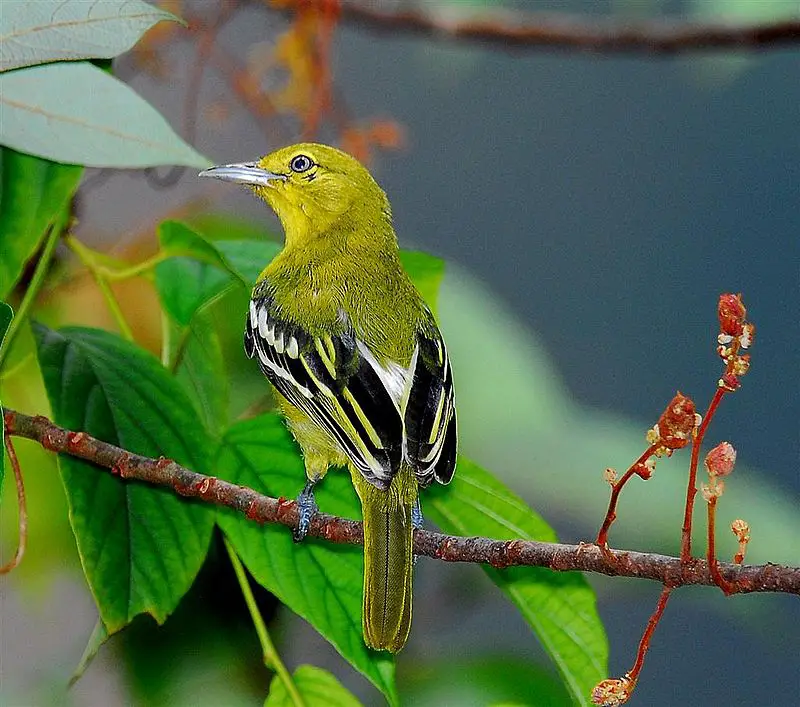
The iora is a small bird species found in south and southeast Asia. It belongs to the family Aegithinidae, which encompasses only this single genus, Aegithina.
This bird was formerly grouped with the leafbirds and fairy-bluebirds, in the family Irenidae.
The common iora was the bird species that prompted the introduction of the genus Aegithina in 1816 by the French ornithologist Louis Jean Pierre Vieillot.
These birds have a unique appearance, with bright green feathers on their upperparts and yellow or white underparts.
They feed on insects and have a distinctive voice that they use to communicate with other ioras.
Despite their small size, they are active and agile in their movements, making them a delight to observe in the wild.
Scientific classification:
| Kingdom | Animalia |
| Phylum | Chordata |
| Class | Aves |
| Order | Passeriformes |
| Superfamily | Malaconotoidea |
| Family | Aegithinidae G. R. Gray, 1869 |
| Genus | Aegithina Vieillot, 1816 |
Also Featured In: Asian Birds, Common Birds in Kerala
45. Megalaimidae
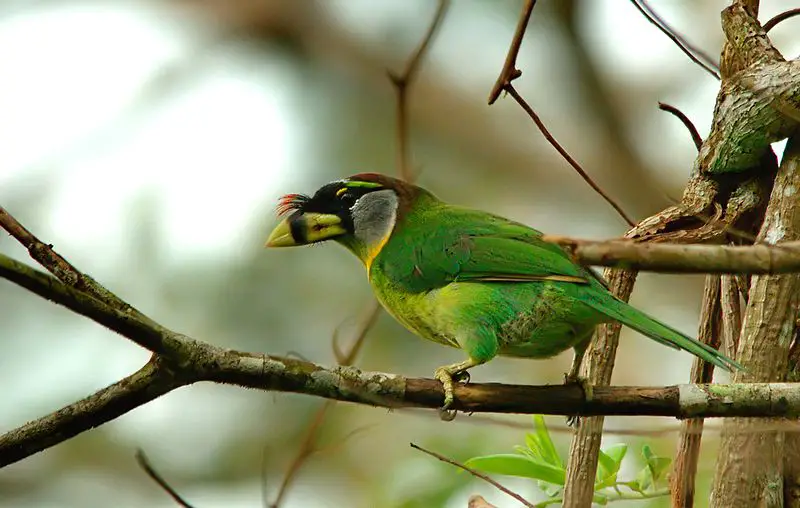
The Megalaimidae birds are a family of species found in the forests of the Indomalayan region. They belong to two genera and include 34 different types.
These birds were once classified as part of the Capitonidae family, but they have since been recognized as distinct. They are closely related to the Lybiidae and Ramphastidae bird families.
Megalaimidae birds have colorful plumage and are known for their distinctive barb-shaped feathers on their bills.
They are active during the day and primarily feed on fruits, insects, and occasionally small animals.
Some species of Megalaimidae birds, such as the brown-headed barbet, are popular among birdwatchers and can be seen in backyard gardens and parks.
Overall, the Megalaimidae bird family is important for maintaining the biodiversity of the forests they inhabit.
Scientific classification:
| Kingdom | Animalia |
| Phylum | Chordata |
| Class | Aves |
| Order | Piciformes |
| Infraorder | Ramphastides |
| Family | Megalaimidae Blyth, 1852 |
Also Featured In: Most Common Taiwan Birds, Birds of Andhra Pradesh
46. Indian Nightjar
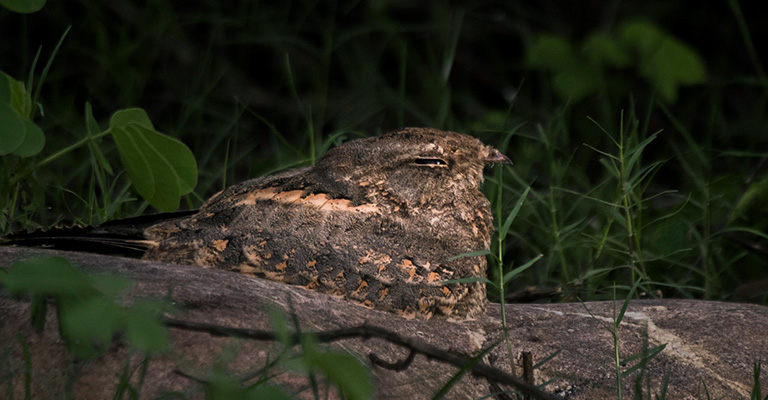
The Indian nightjar is a tiny bird that inhabits open areas in South and Southeast Asia. It is known for its nocturnal habits and distinct calls, which resemble the sound of a stone skipping on ice.
This bird is crepuscular, meaning that it is most active during dawn and dusk. Although it is not often seen, it can be identified by its unique clicking calls.
The Indian nightjar is a resident breeder, which means it stays in one area year-round and breeds there.
This bird chooses its habitat carefully, preferring open landscapes where it can easily find insects to feed on during the night.
Overall, the Indian nightjar is a fascinating and elusive bird that adds to the diversity of birdlife in Asia.
Scientific classification:
| Kingdom | Animalia |
| Phylum | Chordata |
| Class | Aves |
| Clade | Strisores |
| Order | Caprimulgiformes |
| Family | Caprimulgidae |
| Genus | Caprimulgus |
| Species | C. asiaticus |
Also Featured In: Common Birds that Live in Odisha, Birds that Live in Rajasthan
47. Common Woodshrike
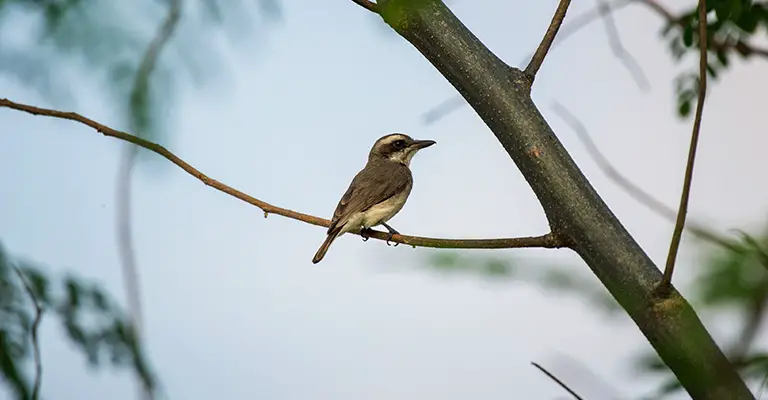
The Common woodshrike bird is a small, ashy brown species found across Asia. It has a distinctive dark cheek patch and broad white brow.
Normally found in thin forests and scrub habitats, they are known to hunt insects as their primary diet, occasionally joining other insectivorous birds.
Native to Sri Lanka, they were previously classified under the family Vangidae. Despite their small size, they have striking features that make them stand out.
The Common woodshrike bird is a unique and intriguing species that deserves our attention and appreciation.
Scientific classification:
| Kingdom | Animalia |
| Phylum | Chordata |
| Class | Aves |
| Order | Passeriformes |
| Family | Vangidae |
| Genus | Tephrodornis |
| Species | T. pondicerianus |
Also Featured In: Delhi Birds You Need to See, Endemic Sri Lanka Birds
48. Black-Headed Cuckooshrike
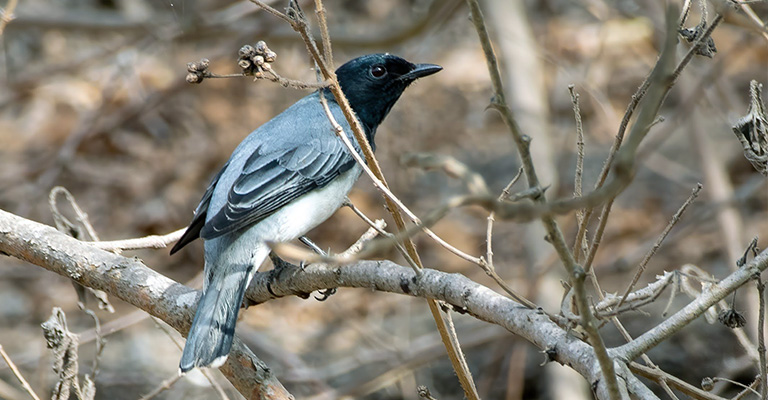
The Black-headed cuckooshrike is a bird species found in the Indian Subcontinent and Southeast Asia.
Males and females have different appearances, with the male having a black head and white underparts and the female being brownish-gray with a white belly.
They inhabit trees in forests and gardens, and feed on insects and berries. These birds are known for their beautiful songs and can often be heard singing loudly in the morning.
They are also known to be aggressive towards other bird species, and will defend their territory fiercely.
Their conservation status is listed as Least Concern, although habitat loss and fragmentation may pose a threat to their population in the future.
Scientific classification:
| Kingdom | Animalia |
| Phylum | Chordata |
| Class | Aves |
| Order | Passeriformes |
| Family | Campephagidae |
| Genus | Lalage |
| Species | L. melanoptera |
Also Featured In: Birds that You’ll Find in Kolkata, Common Birds of Chhattisgarh
49. Artamidae
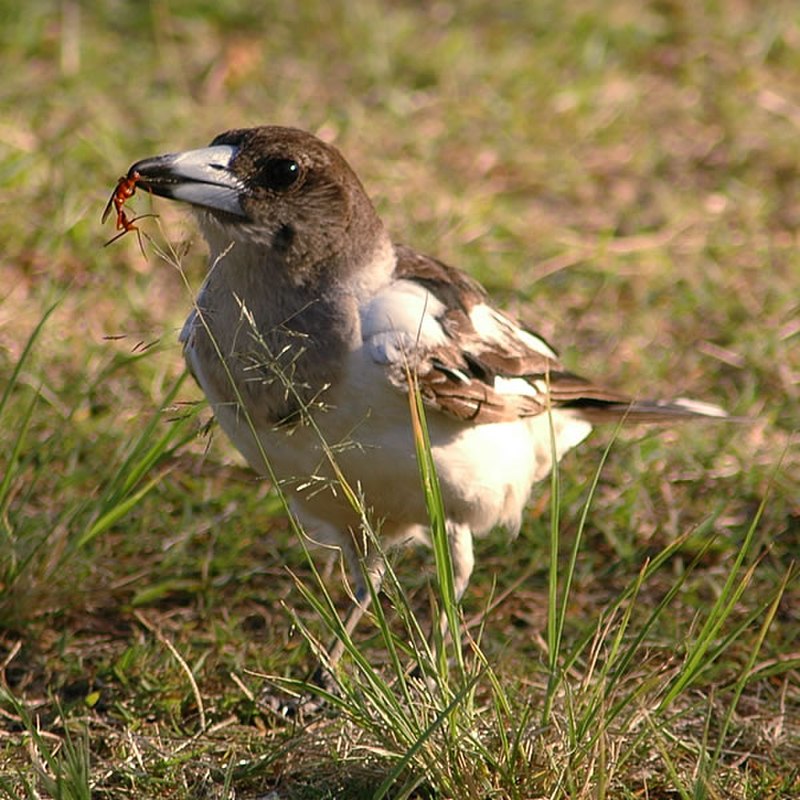
Artamidae is a family of beautiful passerine birds found in the Indo-Pacific region, Southern Asia, and Australia. This family comprises of six fascinating genera and three subfamilies, including Peltops, Artaminae, and Cracticinae.
Interestingly, it includes 24 extant species of birds. What’s more, many of these species are widespread, and each one of them is incredibly unique in their appearance, behavior, and habitat. Historically, Artamidae used to be monotypic, only including woodswallows.
However, today, it is much more diverse, and we can find cracticines, butcherbirds, and currawongs among its members.
These birds have evolved over time to adapt to their respective habitats, and many of them have become critical components of their local ecosystems.
If you are ever in the Indo-Pacific region, Southern Asia, or Australia, you must try to spot some of these incredible birds.
Scientific classification:
| Kingdom | Animalia |
| Phylum | Chordata |
| Class | Aves |
| Order | Passeriformes |
| Superfamily | Malaconotoidea |
| Family | Artamidae Vigors, 1825 |
50. Yellow-Billed Babbler
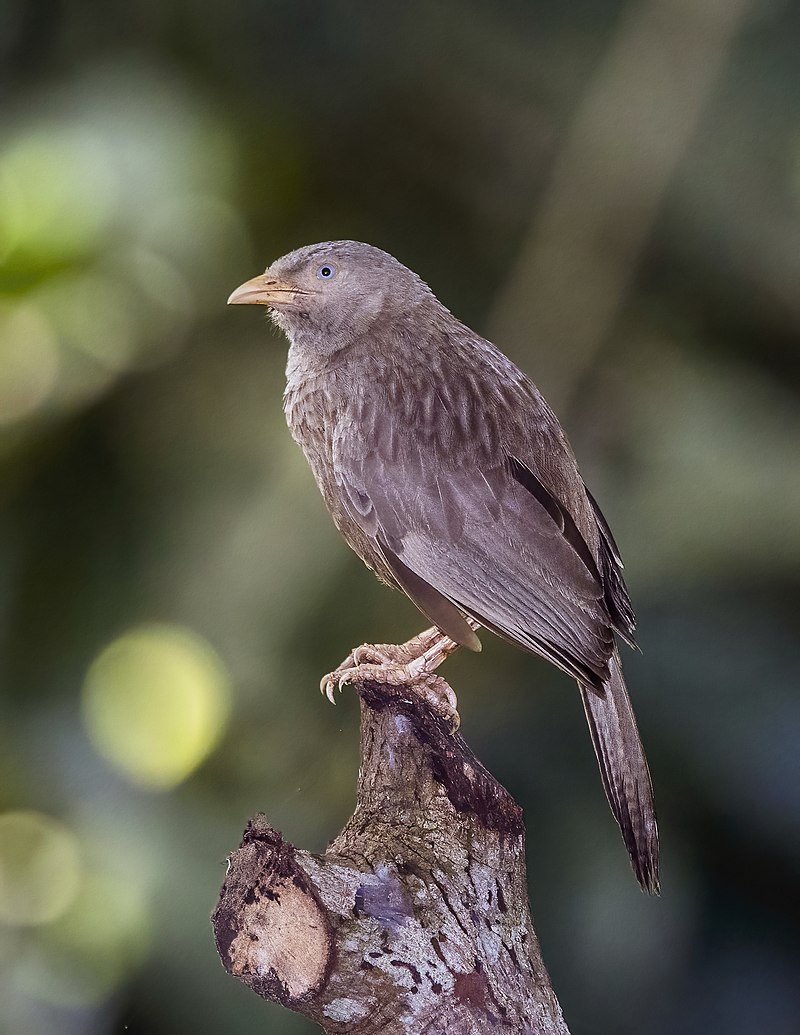
The Yellow-billed babbler is a resident breeding bird found in southern India and Sri Lanka. This bird species is commonly found in scrub, gardens, and cultivated land.
They have short rounded wings and weak flight and are frequently spotted calling. These birds are not migratory and are part of the Leiothrichidae family.
The Yellow-billed babbler has distinct yellow beaks, which help them in feeding on insects, fruits, and berries.
They are sociable birds and preferred to live in groups. Their plumage is mostly brown with black streaks on their feathers.
These birds are known for their melodious calls consisting of a range of notes and whistles. Yellow-billed babblers are observed in pairs or small groups where they forage or sing at dawn and dusk.
Scientific classification:
| Kingdom | Animalia |
| Phylum | Chordata |
| Class | Aves |
| Order | Passeriformes |
| Family | Leiothrichidae |
| Genus | Argya |
| Species | A. affinis |
51. Ciconiiformes
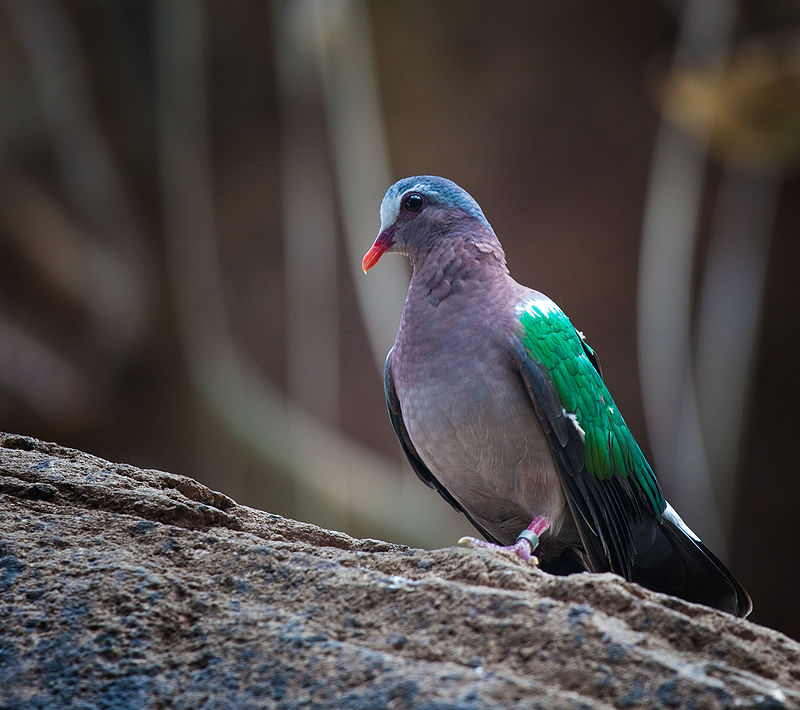
Ciconiiformes are a diverse group of large, wading birds that are found all over the world. They are characterized by their long, pointed bills and typically narrow wingspan.
Most species feed on fish, frogs, and other small aquatic animals, although some also hunt mammals or reptiles.
Among the best-known species in this order are the storks, which are famous for their distinctive nesting behaviors and migratory habits.
Other notable Ciconiiformes birds include herons, egrets, ibises, spoonbills, and bitterns. These birds are often found near wetlands, rivers, and other bodies of water.
Although many species are still common, some populations have declined due to habitat loss and hunting.
Conservation efforts are being undertaken to protect these magnificent birds and their habitats for future generations.